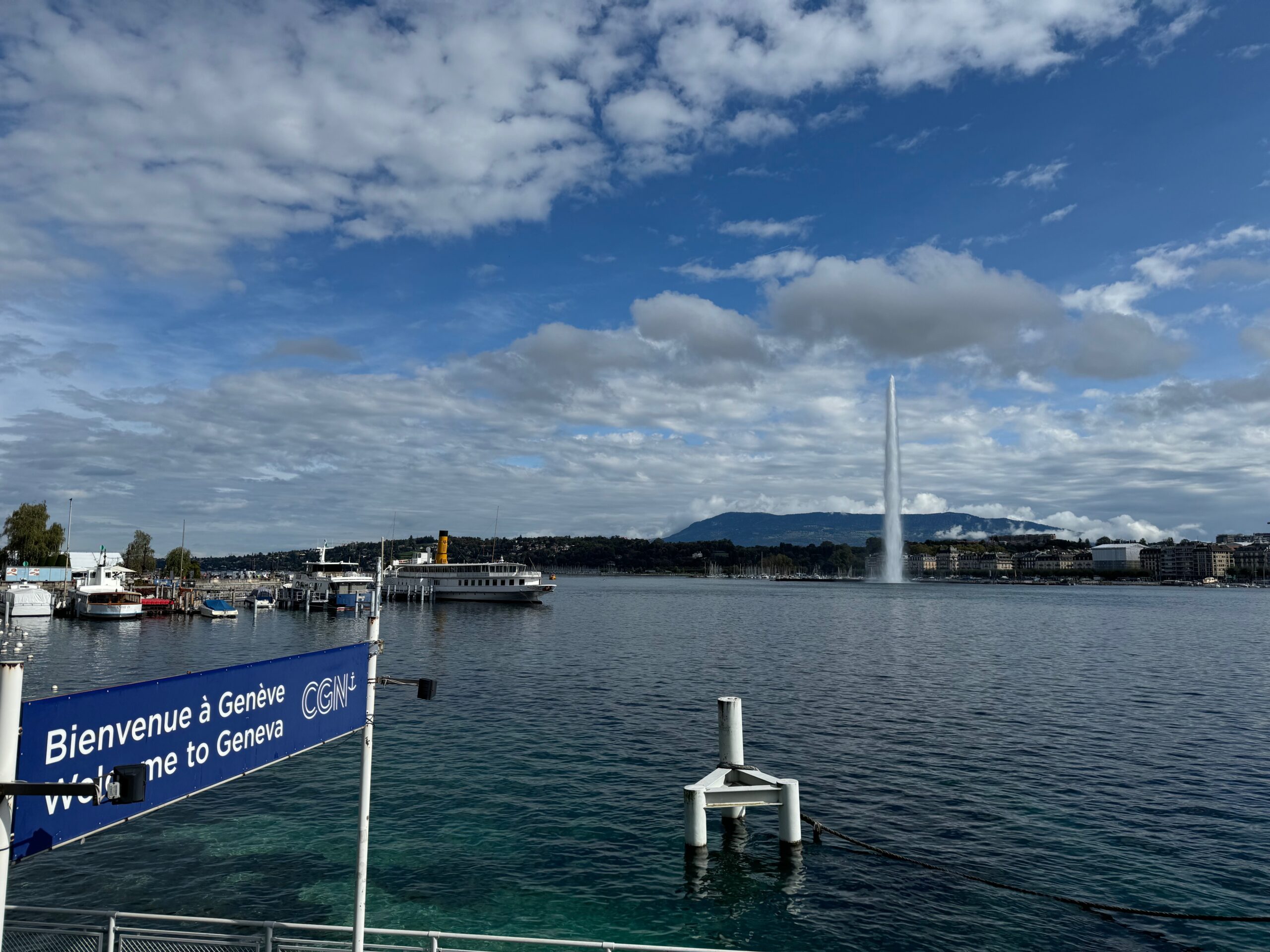When did I last visit Geneva? October 2024
When was this article last updated? February 2025
Arriving in Geneva
The easiest route from Geneva Airport into the city is by using the train. Trains are operated by the Swiss national rail company SBB, cost 3 Swiss Francs for a one way trip, take 7 minutes to reach the heart of the city and run on average 7 times per hour.
The station itself is easy to find and well signposted from arrivals. Ticket machines are located both in the station and in the baggage reclaim hall on arrival at the airport. If you are travelling to a hotel straight away, you can get a 70-minute ticket for Geneva city for free in the baggage reclaim (just keep your boarding pass with you for the 7 minute journey!).
Trains to other cities in Switzerland are available, including Lausanne, Zurich and Bern. If your trip to Switzerland includes more than just Geneva, it is well worth looking into the various offers and travel cards that are available to make travelling by train in Switzerland a little bit cheaper!
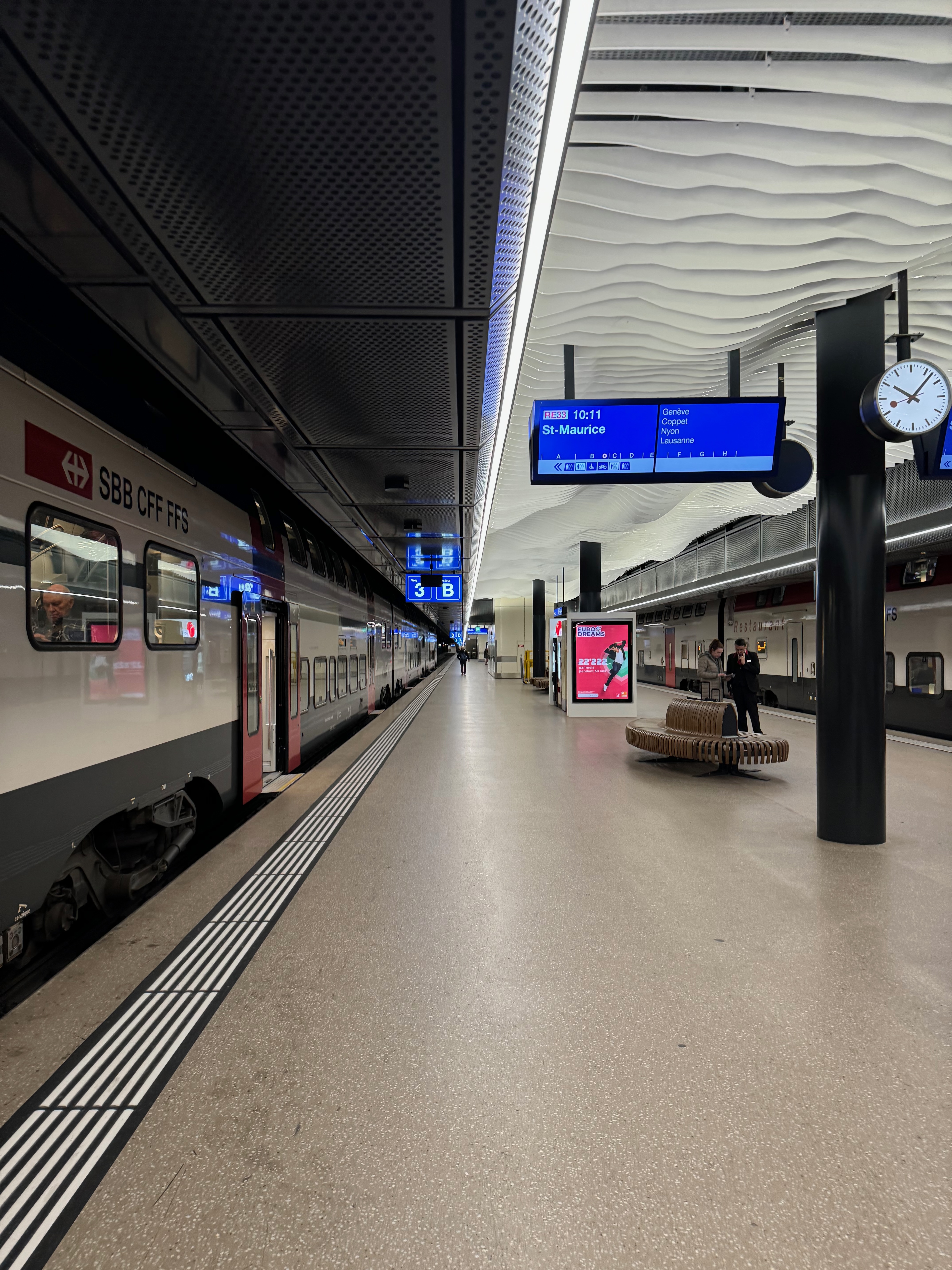
If you are travelling to a destination slightly further outside Geneva city centre, a bus may be a better option. There are several routes available from the airport at with most routes running at least every 15 minutes (if not more often). Details of bus services can be found at tpg.ch.
Worth knowing! If you are staying at a hotel or another approved accommodation in Geneva, you will be provided with a free hotel transport card covering transport across Geneva and the surrounding area. In this case, there is no need for you to buy an additional public transport tickets. More details can be found at www.geneve.com/en/plan-stay/getting-around/free-geneva-transport-card.
Taxis between Geneva Airport and the city are easily available but can be very expensive. A taxi to the city will cost around 50-60 Swiss Francs. Rideshare services can be slightly cheaper, with an Uber being around 40-50 Swiss Francs. My advice would be, if you can take public transport to your destination, then do, as it will save you a lot of money.
All major rental car providers have a presence in Geneva Airport. If you are travelling only within the city of Geneva, the surrounding towns or the Saleve, you will not need a rental car as public transport is very good. If your plans involve somewhere further afield, then a rental car could be useful. The airport has rental car companies located in Switzerland and in France (as the airport is on the border) to cater for all travel needs.
Getting around Geneva
Trams are the best way to get around Geneva city centre. There are five lines, going out as far as CERN on the northern border with France and Annemasse across to the south in France. The trams generally converge around Cornavin Station in the centre of the city and run very frequently. You can get to most tourist attractions easily using the tram system, including the Palais de Nations and Geneva’s Old Town.

Buses are also useful in Geneva city centre, if there are any problems with the trams. From my experience, I used trams and Mouettes more than I did buses, however, if you are travelling to the suburbs, the wider Geneva canton or across the border to France, buses can be a better bet. If you are travelling to Salève, you will need to take a bus.
Mouette boats are a popular way to see the city from Lake Geneva. They are integrated into Geneva’s public transport system meaning fares are affordable and you can save on a full boat trip! See more in the ‘things to do’ section below…
For more details on trams, buses and boats, visit TPG’s website here.
Once you’ve got to the general area of Geneva that you want to visit, be it the Old Town, the Palais de Nations area or Eaux-Vives, most attractions are within walking distance of each other. Getting yourself lost within Geneva’s Old Town or taking a lakeside walk on the promenade and bridges around Lake Geneva can be a very relaxing way to spend a sunny afternoon!
Things to do in and around Geneva
The Palais des Nations is the European headquarters of the United Nations and is located near to the centre of Geneva. You can book a tour inside the palace at the following link – www.ungeneva.org/en/visit – these tours book up very quickly, often several months in advance, so make sure to check your dates early! The official advice is to book at least 3 months in advance. A tour costs 22 Swiss Francs per person. I wasn’t lucky enough to get a tour in time but, if you are interested in world affairs, this could be for you!
Outside the front of the palace, you can see the Alley of the Flags displaying the flags of all UN member states in the gardens. Even if you aren’t on an organised tour, you can see the flags through the fence as seen in the photo below. In the square next to the palace, you can see the Broken Chair sculpture, symbolising opposition to landmines and cluster bombs.
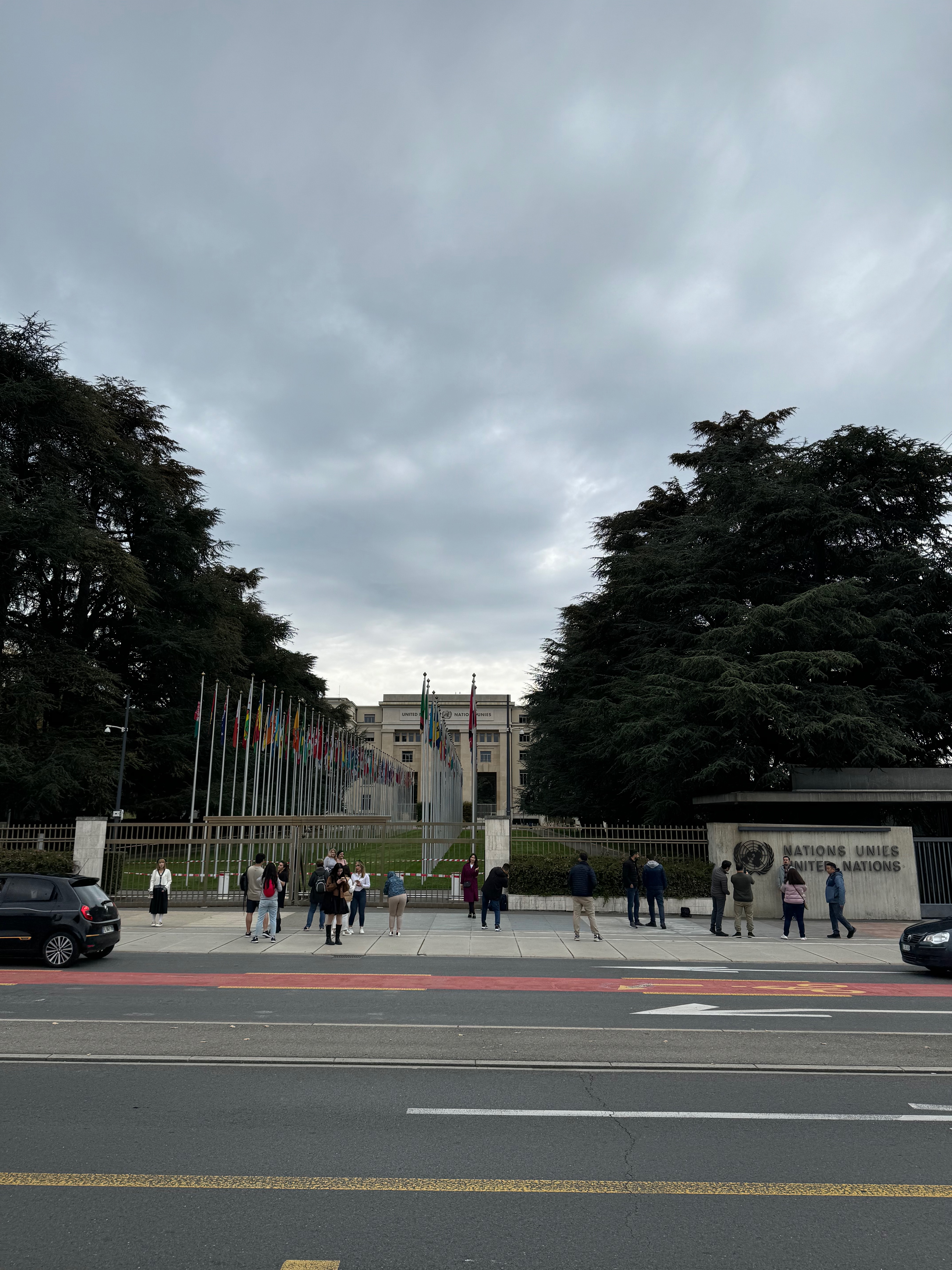
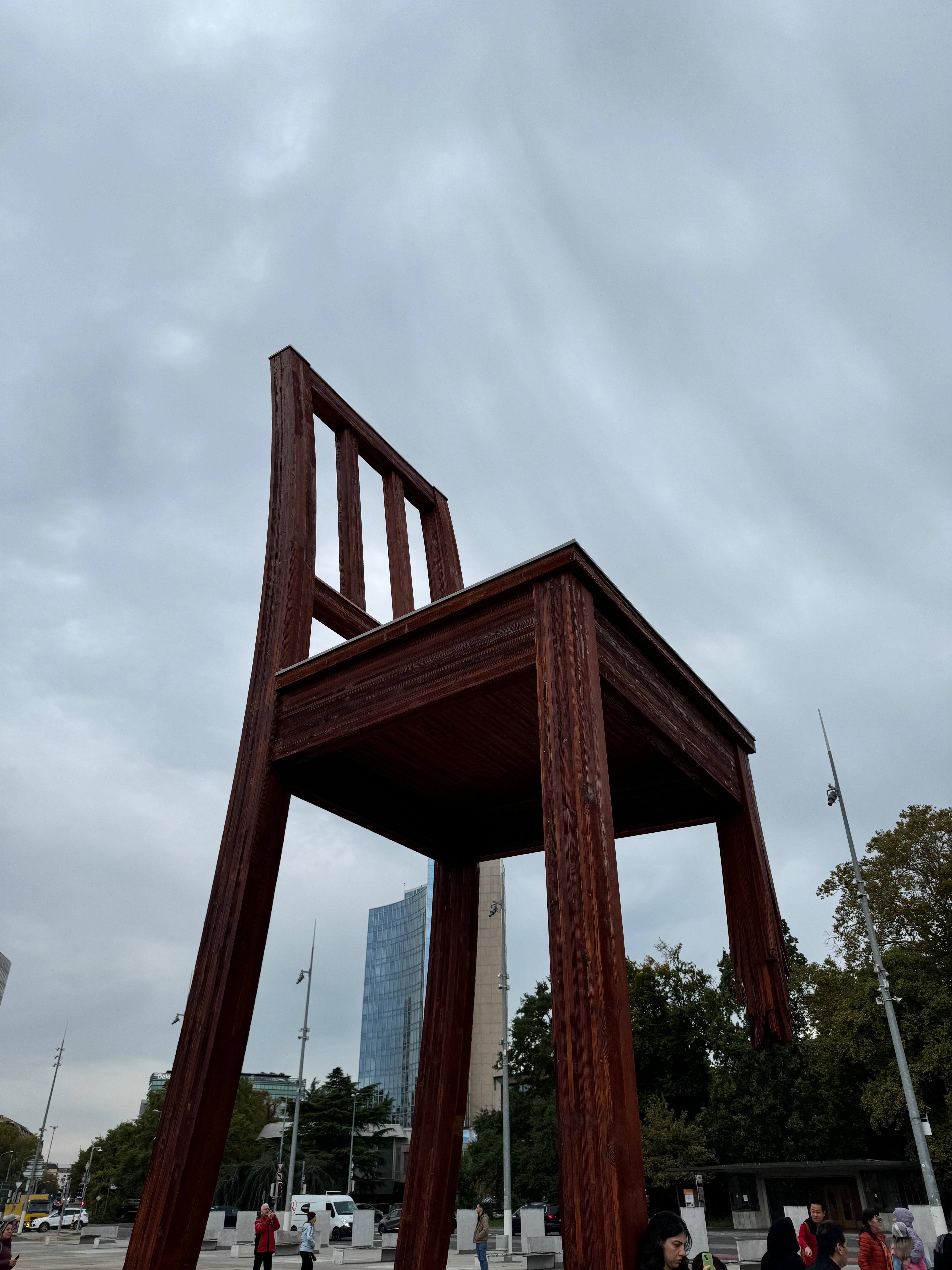
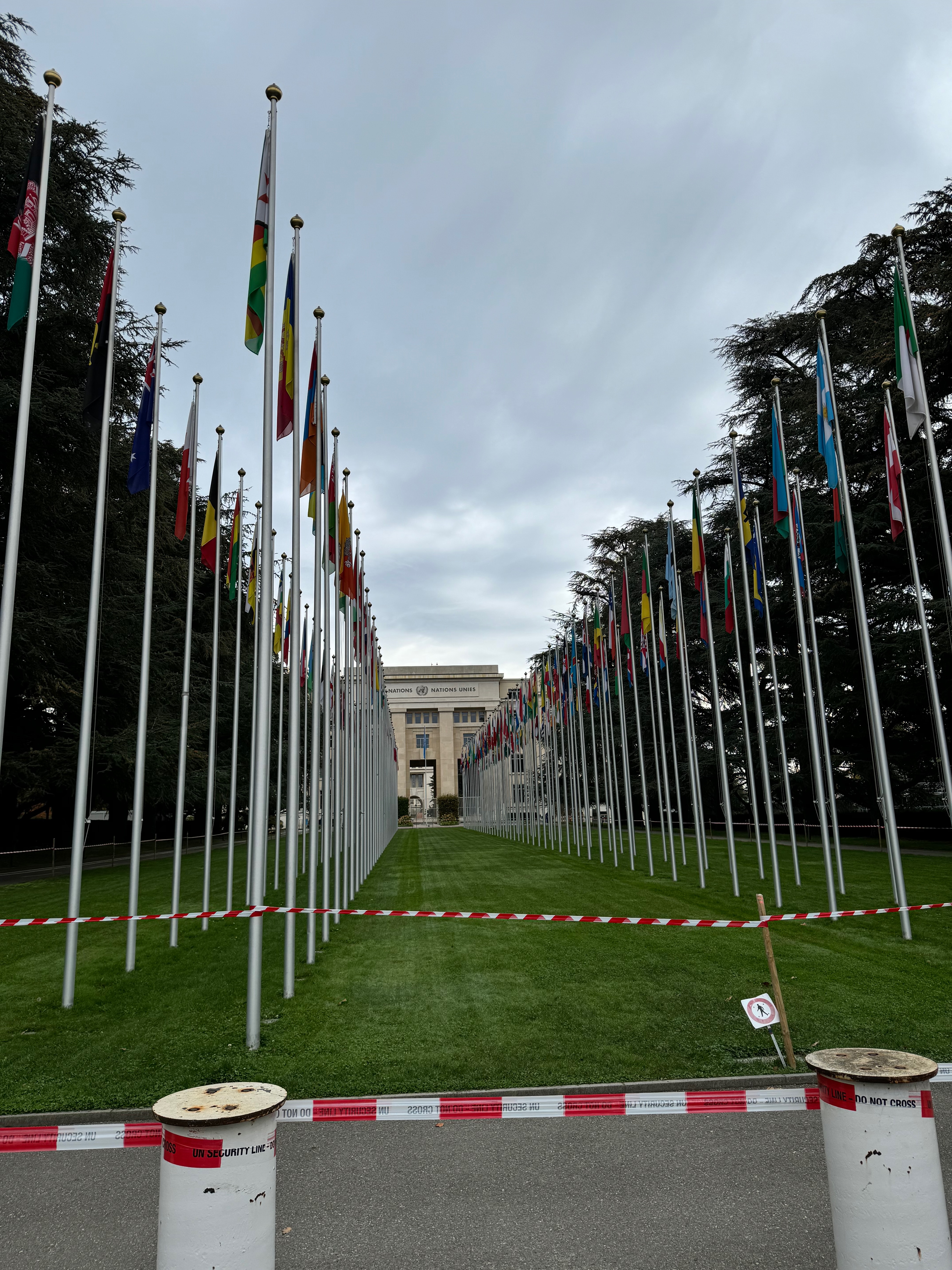
The International Museum of the Red Cross and Red Crescent is located a short walk away from the Palais des Nations. The permanent exhibition outlines a detailed and fascinating history of humanitarian action across the world, including aid and family reunion. Displays are easy to understand and in several languages. A key feature of the museum is the use of personal experiences to highlight the large variety of work that the Red Cross and Red Crescent do. There are often temporary exhibitions focussing on specific issues of humanitarian events. Entry costs 15 Swiss Francs and concessionary ticket fees are available.
CERN (the European Organisation of Nuclear Research) is home to the Large Hadron Collider and can be found at the border between Switzerland and France. Their headquarters is home to a visitor centre and museum, which is free to enter. There are several exhibitions, interactive exhibits, shows and first-come-first-served tours available as part of the centre. There is an app to help book activities as part of your visit. The exhibitions are broken down into themes, one in each of the cylindrical buildings over the road. Without going into the very fine technical details, the exhibitions cover a range of CERN’s work in an easy to understand and interactive format. It is a good place to spend a few hours, particularly on a rainy day. The centre is located at the end of tram line 18, direct from Geneva Station. More details can be found at www.visit.cern.
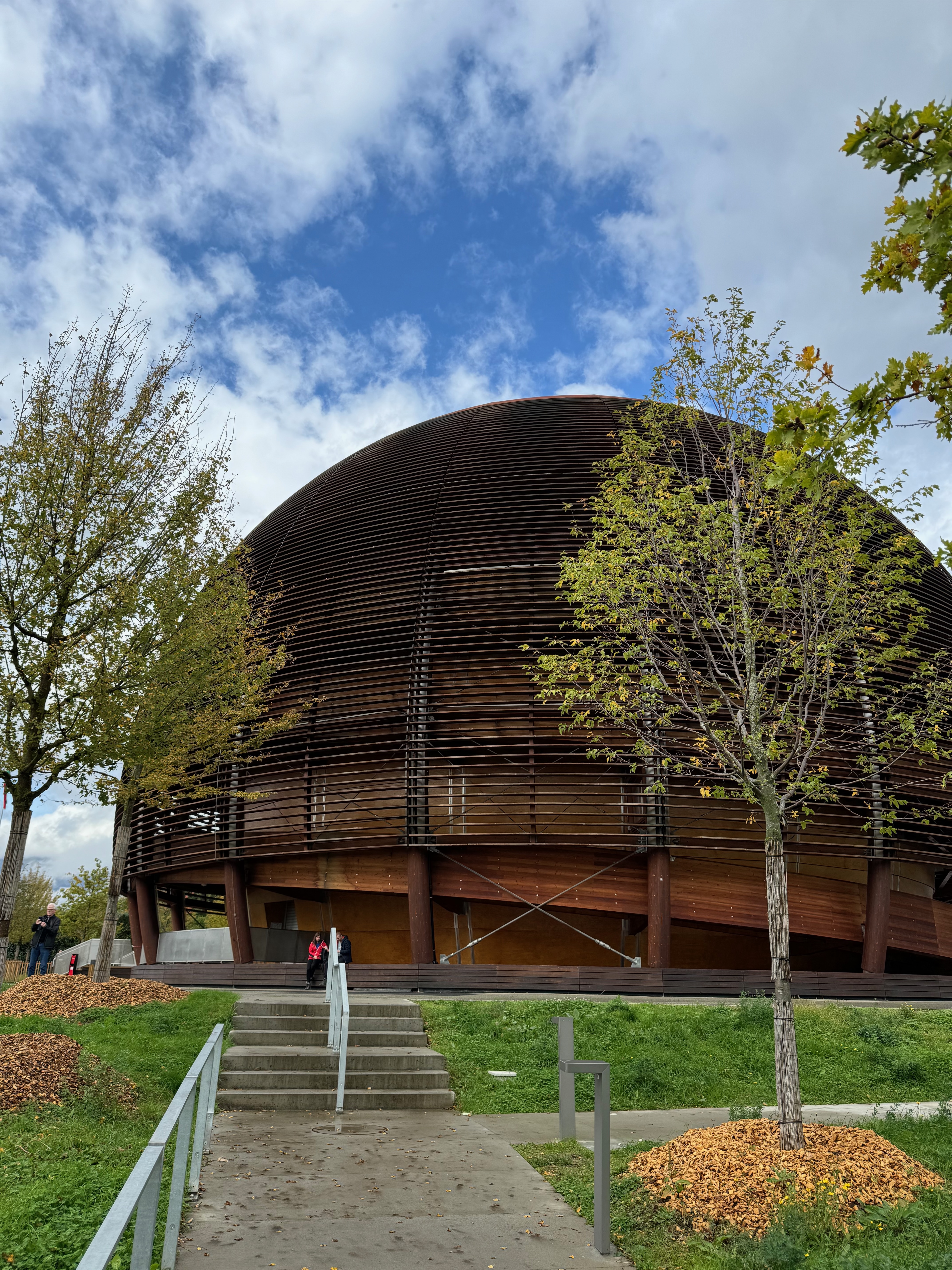
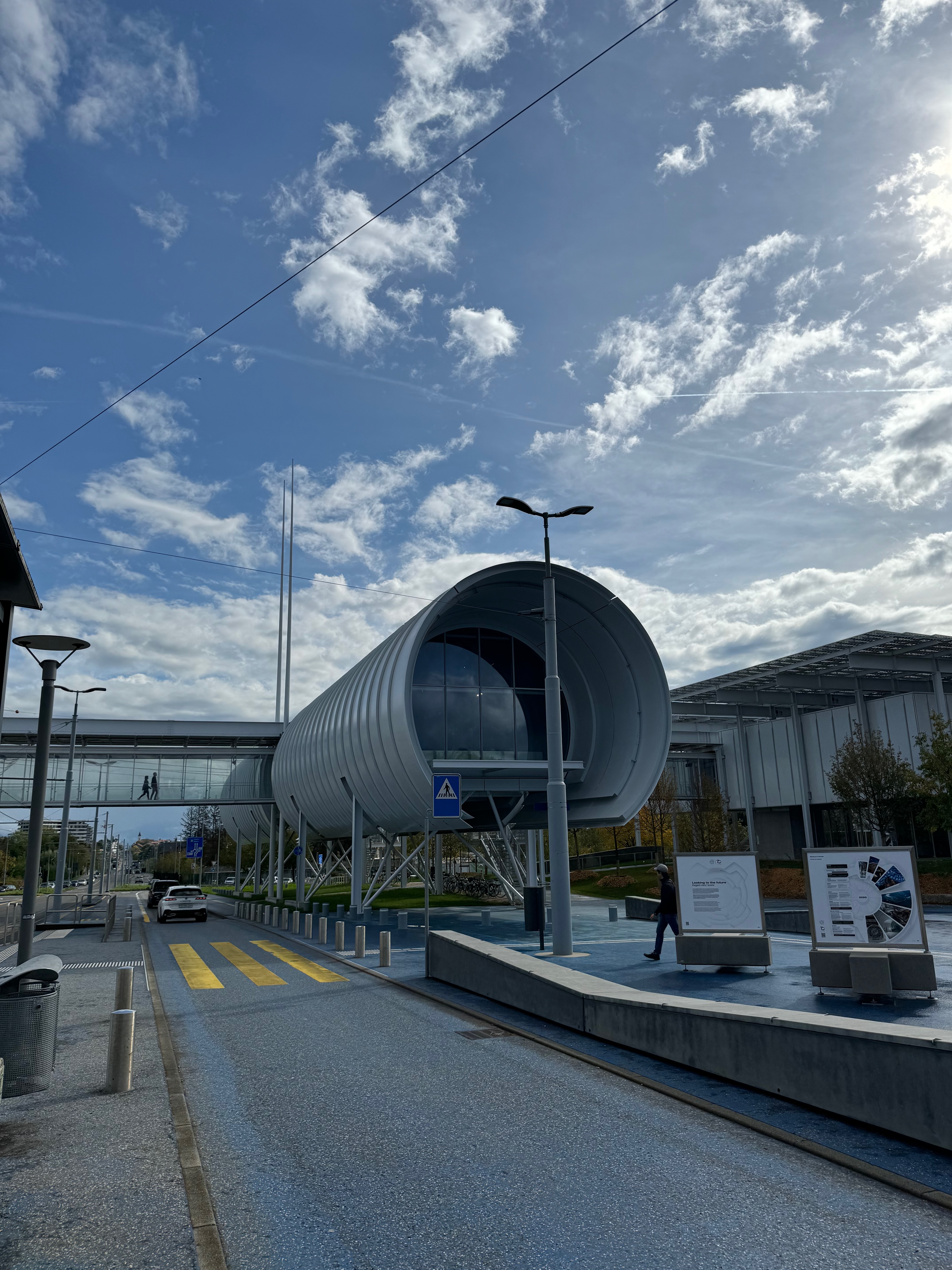
St Peter’s Cathedral is located at the centre of Geneva’s old town, at one of the highest points in the city centre. It is free to look around the Cathedral itself and various exhibits around the sides about the Church’s history dating back to the Reformation and before. For 7 Swiss Francs, you can climb the 147 steps up to the top of the Cathedral to get a fantastic panoramic view of the city of Geneva, including across Lake Geneva into the distance. The steps up to the tower are very narrow in places, in case that’s something you’re not a fan of!
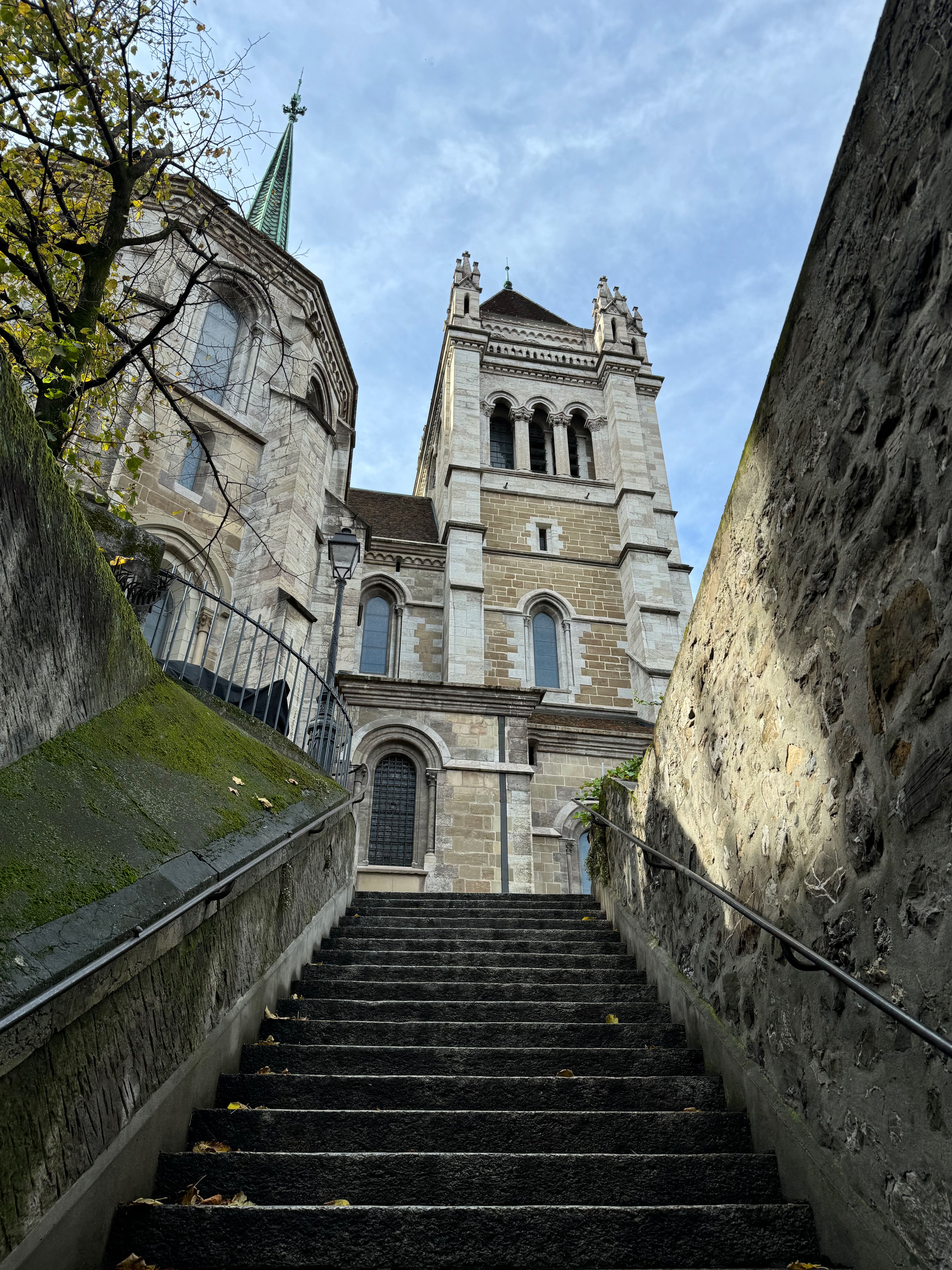
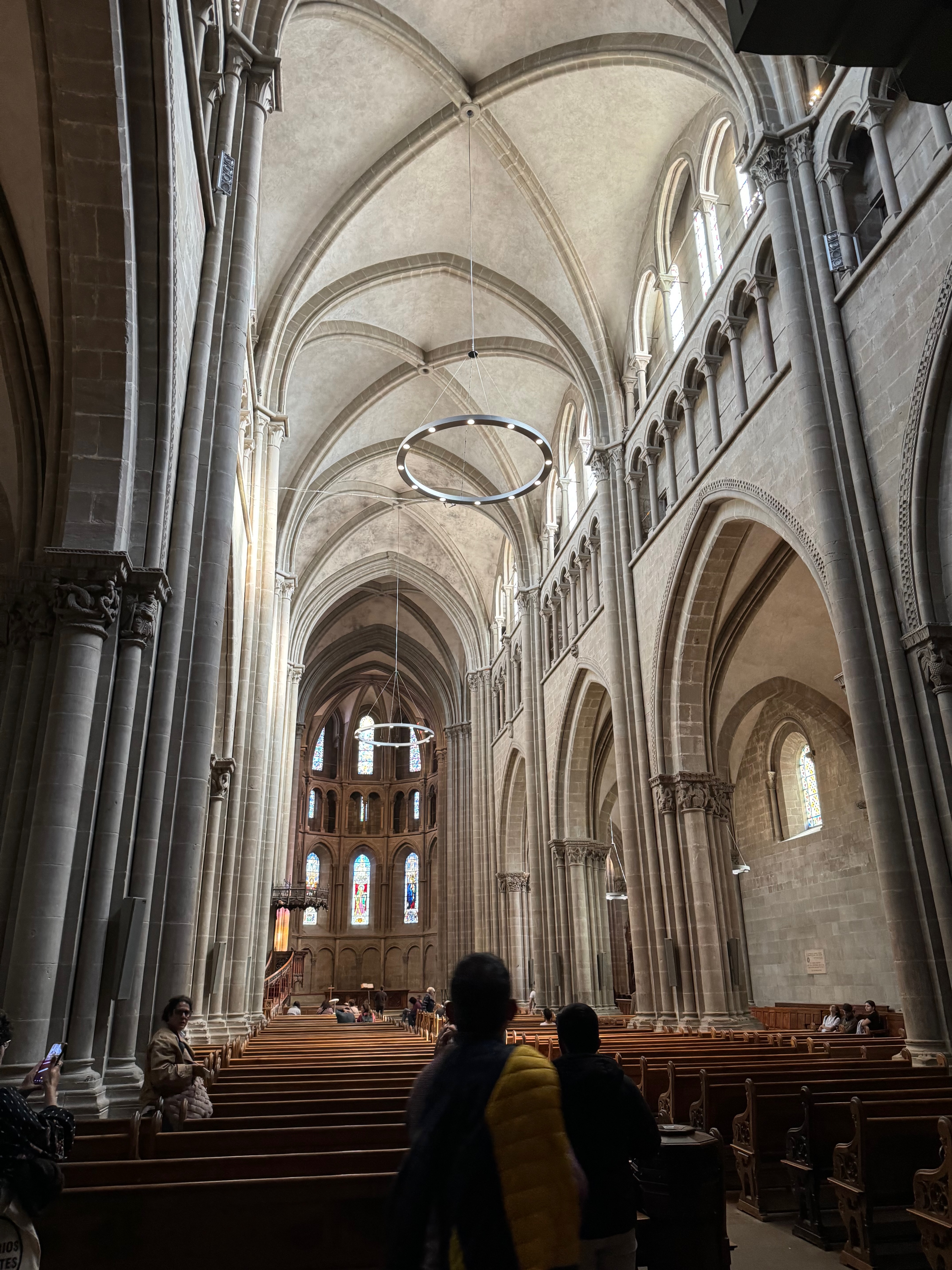
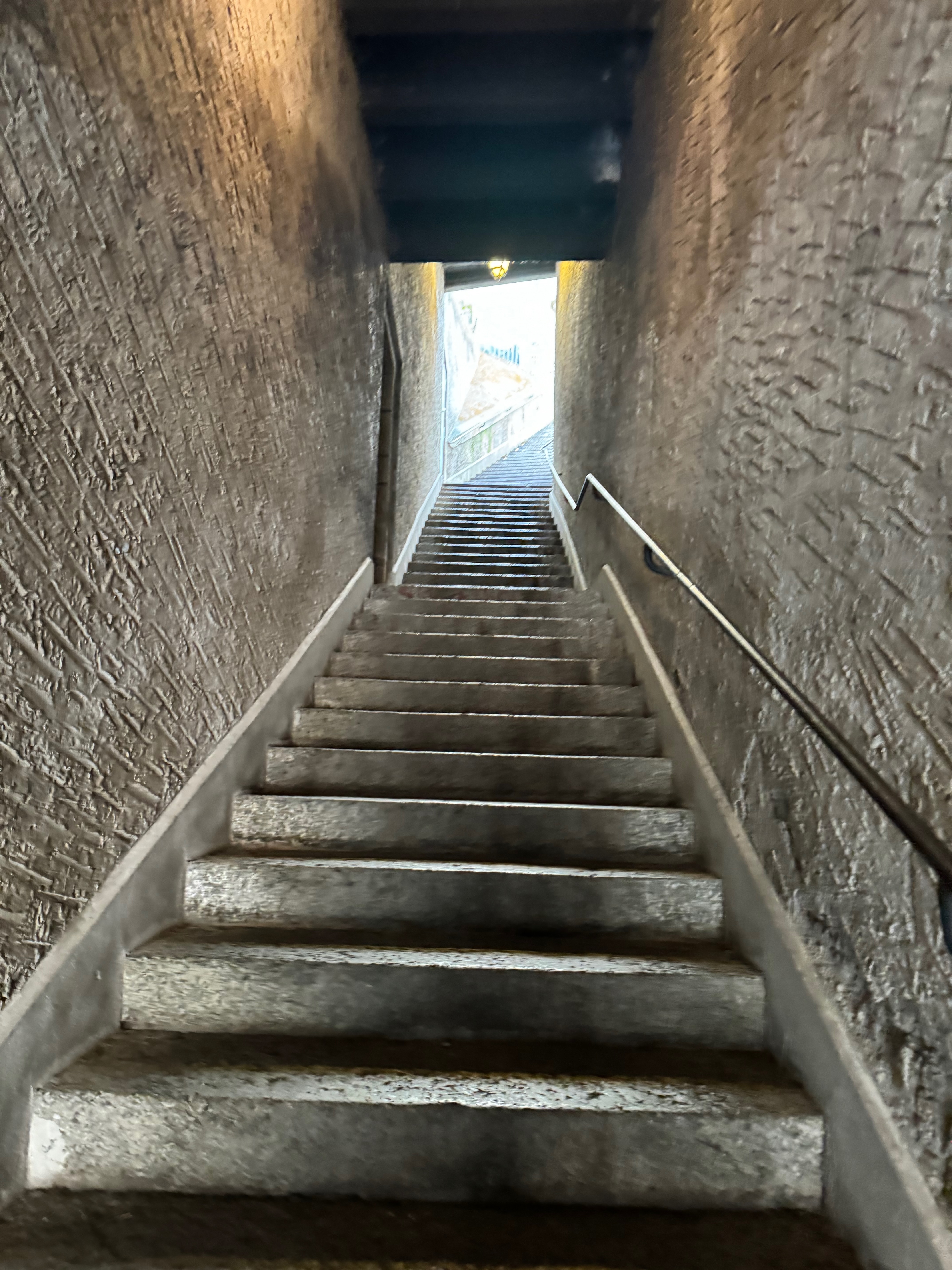
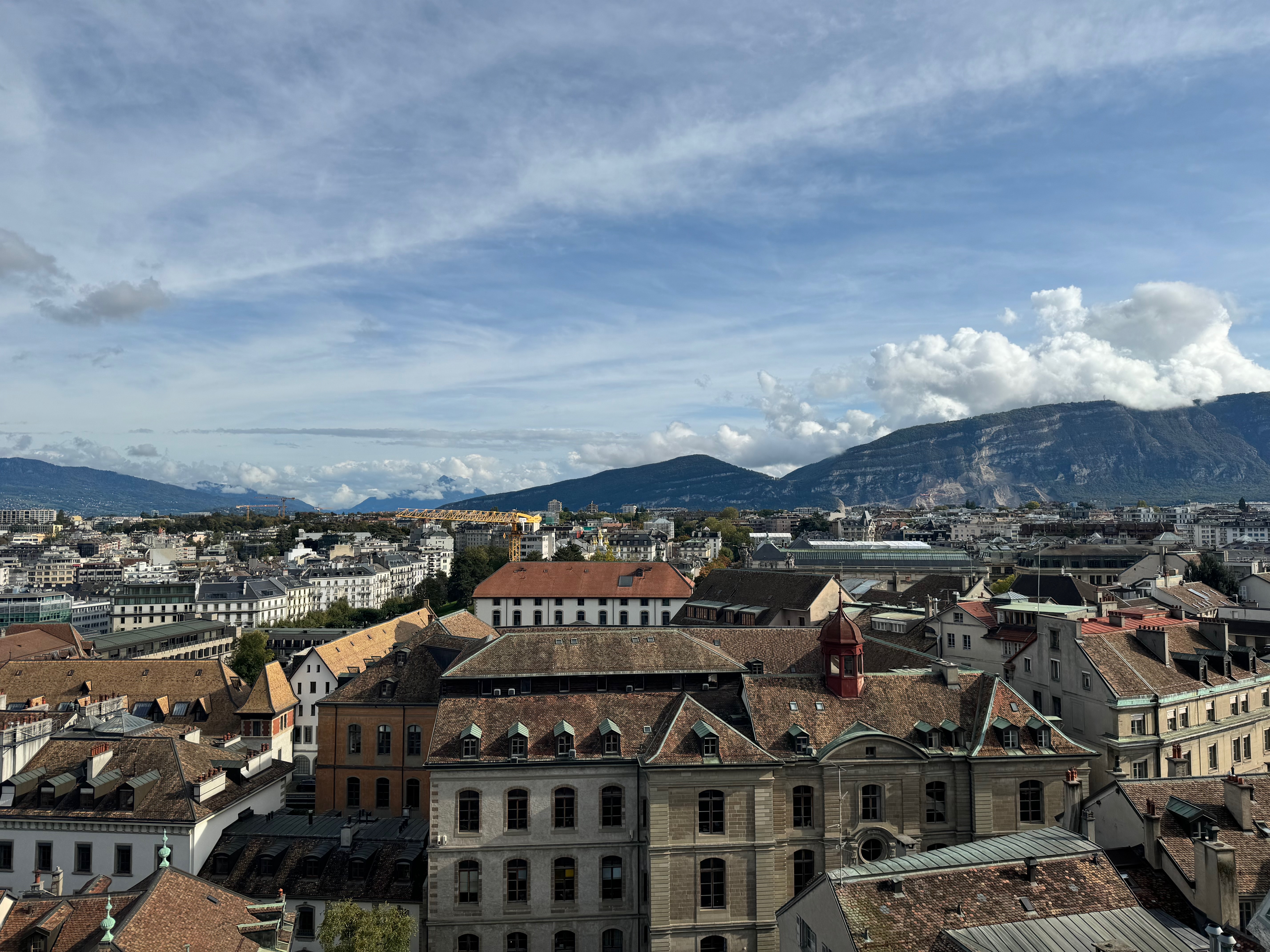
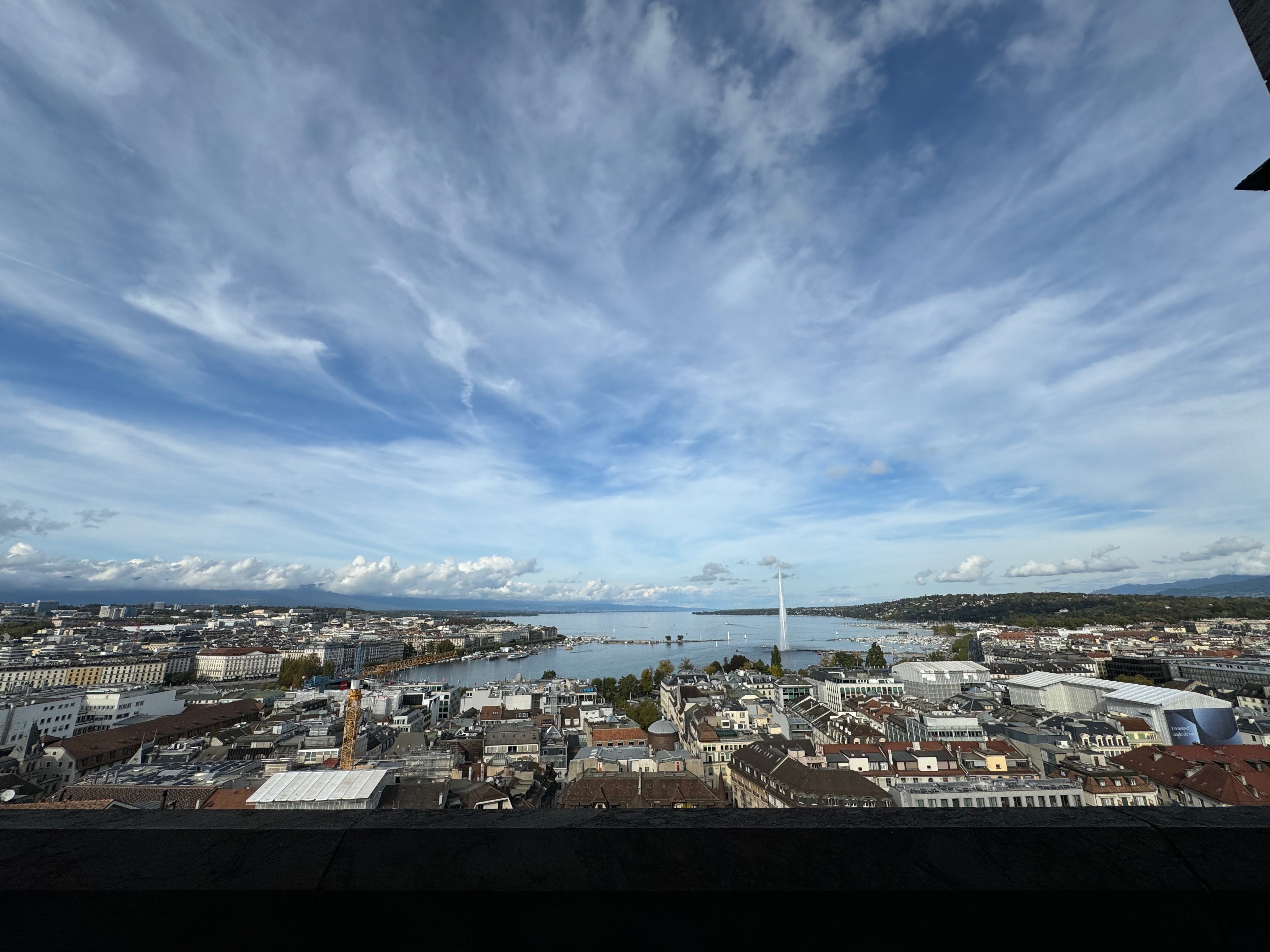
After visiting St Peter’s Cathedral, make sure to go and have a walk around the cobbled streets of Geneva’s Old Town, the largest historic city in Switzerland. One spot to visit in particular is Place du Bourg-de-Four, a popular meeting spot surrounded by cafes. The Old Town is a perfect place to spend a few hours getting lost in the winding streets, exploring hundreds of years of Geneva’s history.
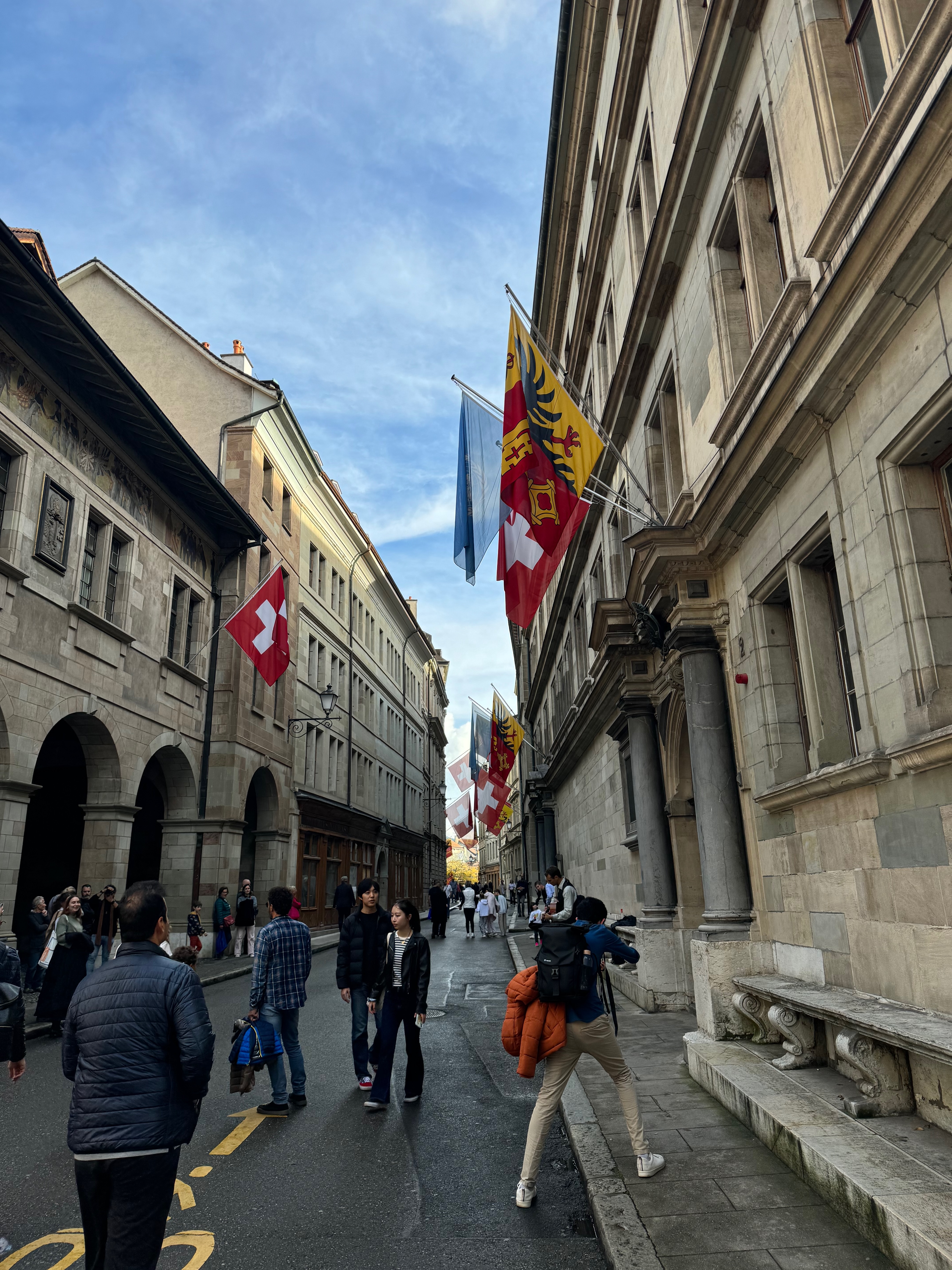
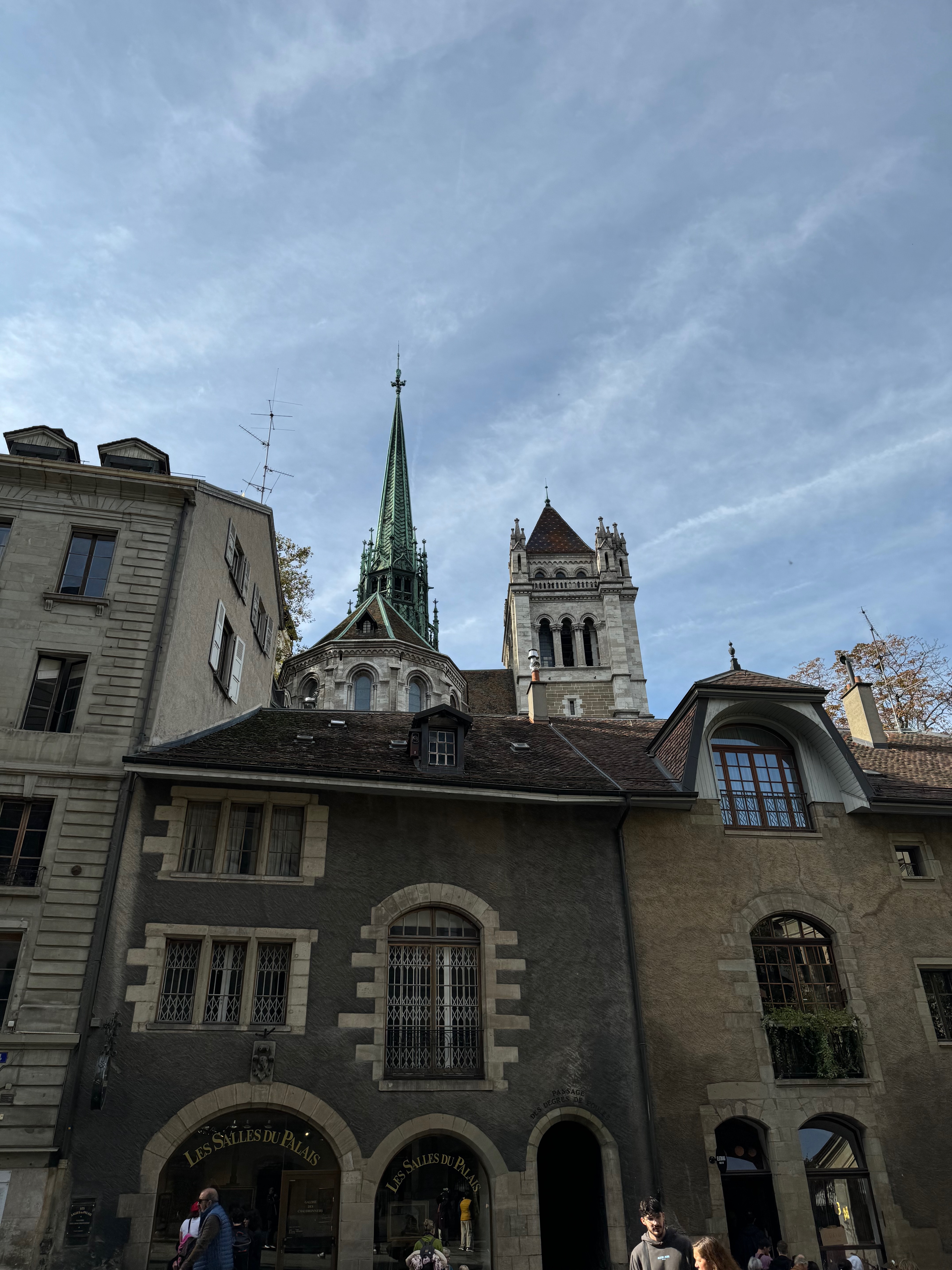
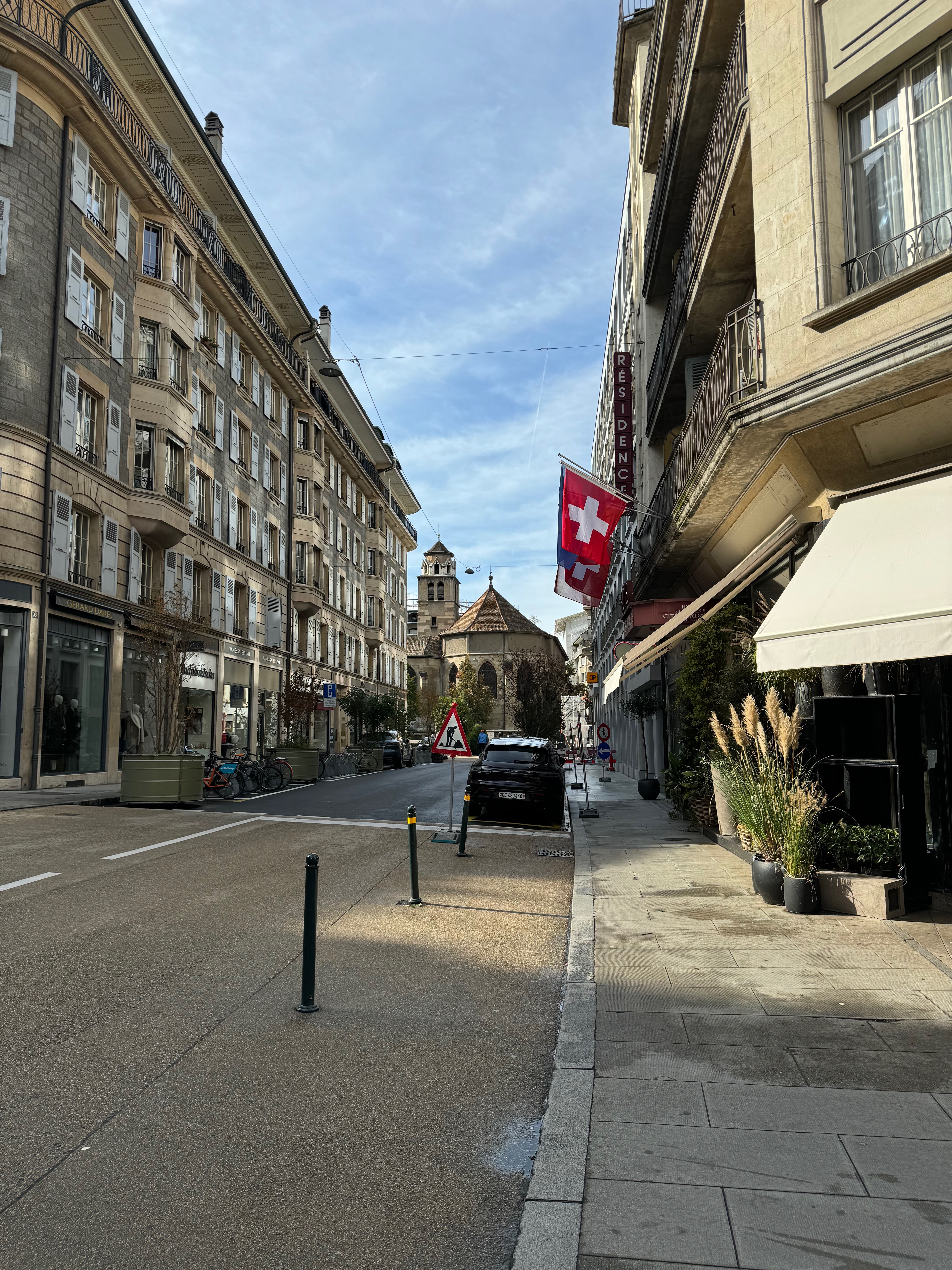
The Salève Cable Car is located to the south of Geneva, just across the border into France. The ride takes a few minutes and is a steep climb up the site of Mont Salève up to the station at the top. In the building located at the summit station, there is an exhibition about the Salève, a gift shop, a viewpoint and a cafe serving lunch food. On a clear day, you can see across the whole city of Geneva, Lake Geneva and into the French and Swiss Alps. On a day with more cloud, you can check the webcam on the viewpoint on the Salève website here. A return journey costs 18 Euros. The cable car can be accessed by bus from Geneva on bus 8 to the border town of Veyrier, followed by a short 10 minute walk to the base station.
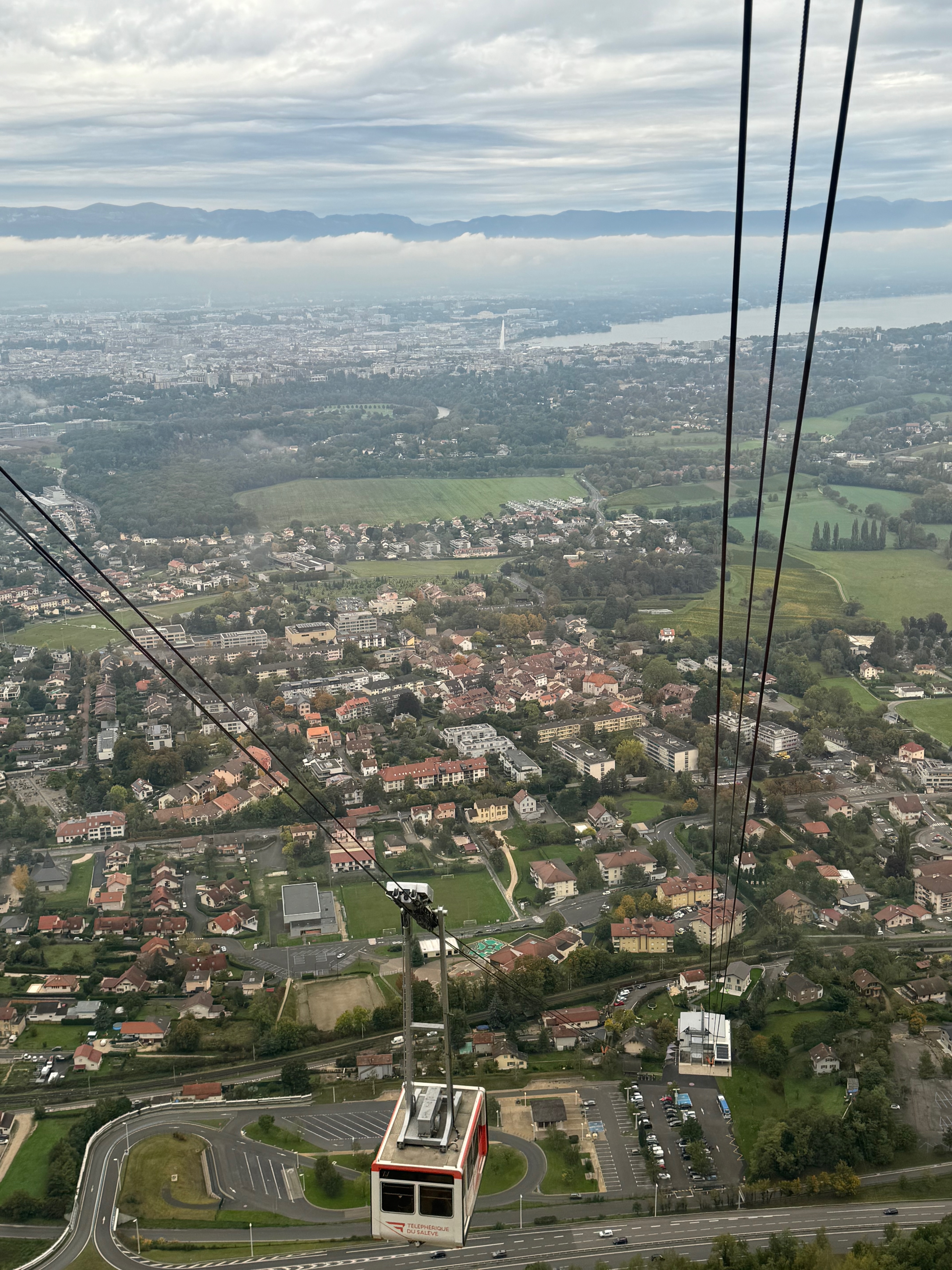
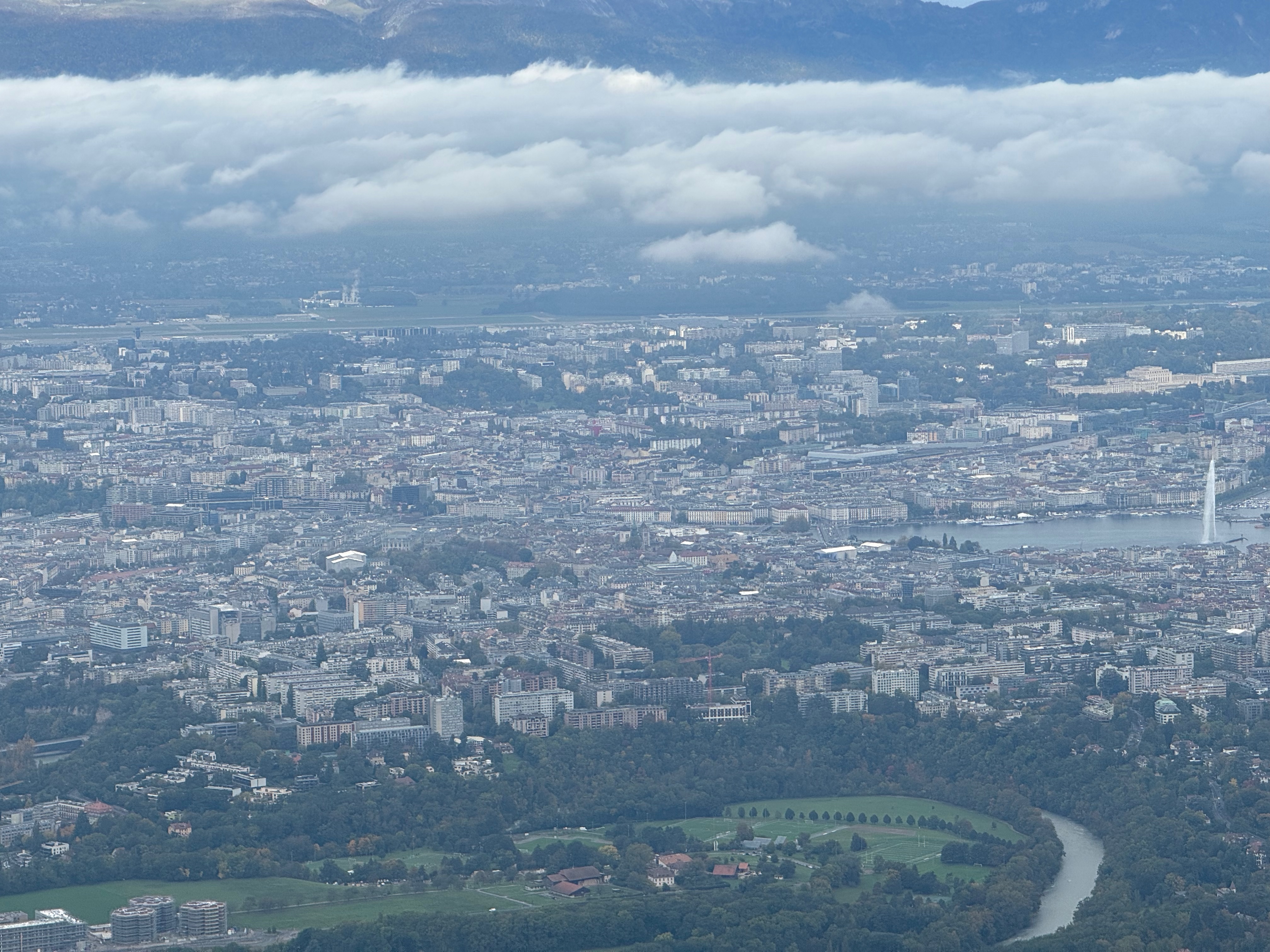
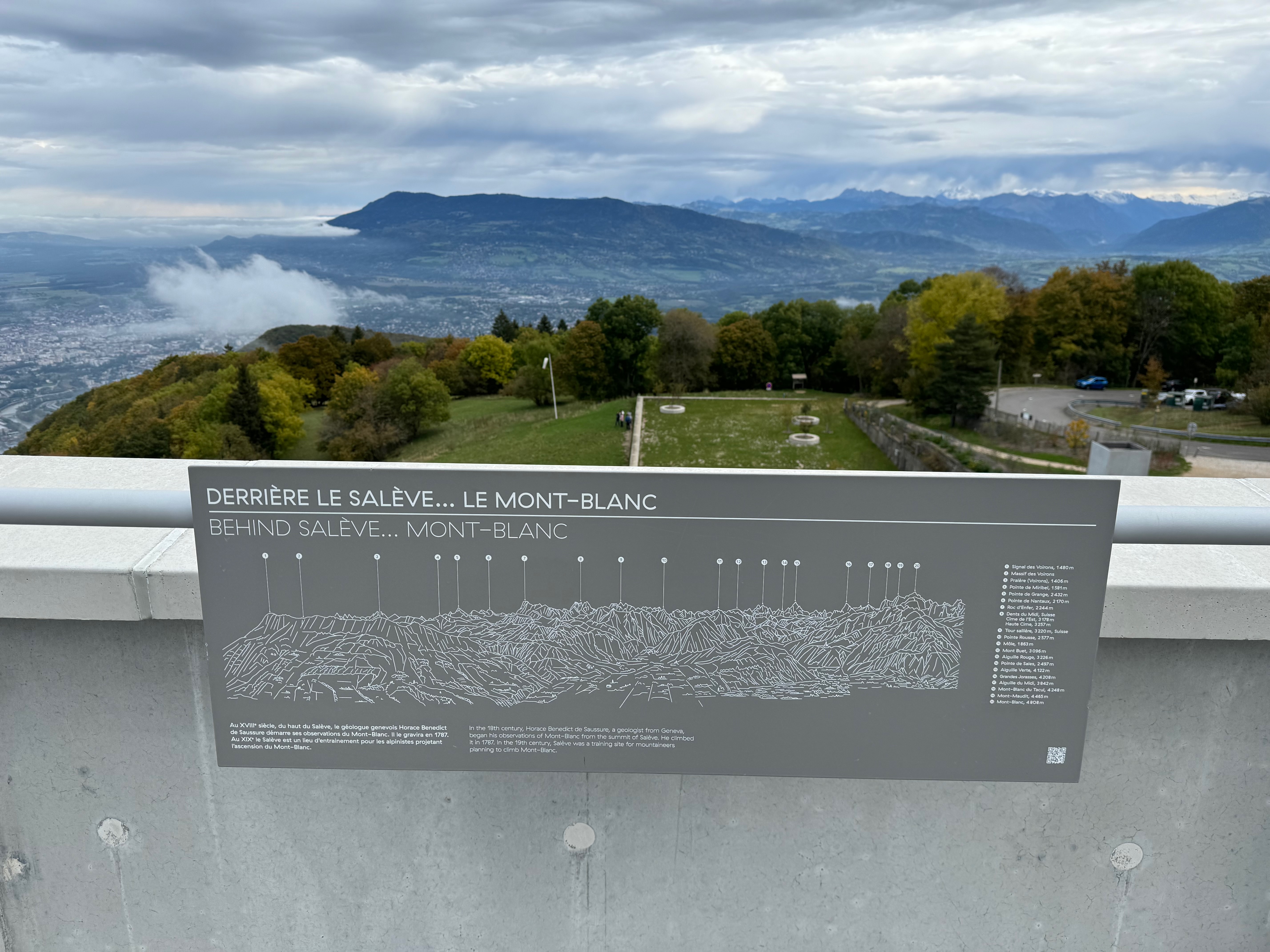
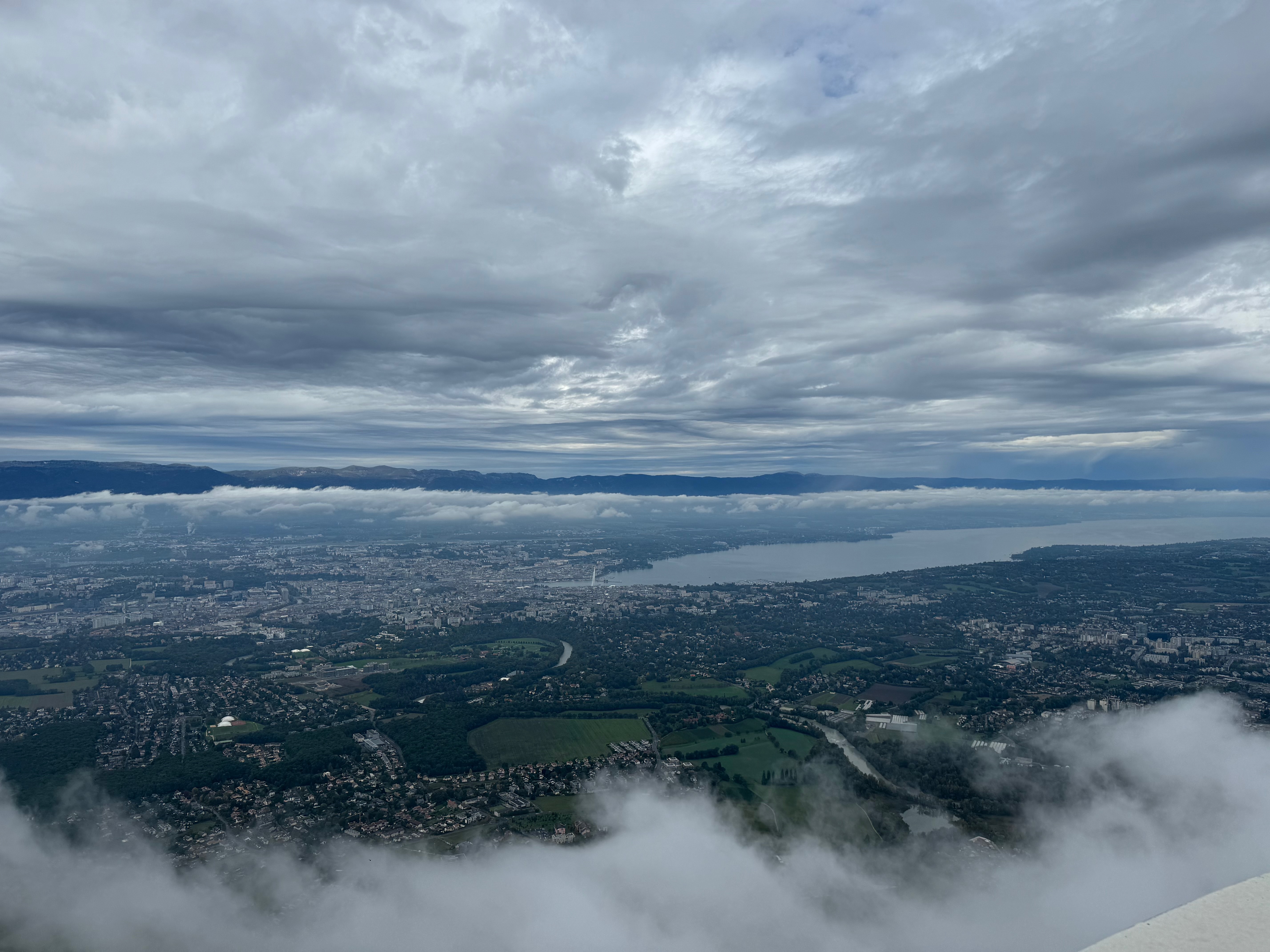
You can’t visit Geneva without seeing Lake Geneva and the Jet d’Eau. You will spot the lake, the largest freshwater lake in western Europe, out of your plane window running alongside the mountains as you enter the final approach into Geneva Airport. The promenade has several pocket parks as it runs along both banks of the lake in Geneva city centre and can be a nice place to relax whilst on your trip.
The Jet d’Eau fountain, located on the south side of the lake, propels water at 200km/h to a height of 140 metres and is one of Geneva’s more recognisable symbols. The fountain was created in 1891 as an outlet to release over-pressured water in the evenings when Geneva’s factories would close. You can walk along the pier next to the fountain and get right up close to the base – it shouldn’t be a surprise this also gets you rather wet! The operating times of the fountain and any illuminations for special occasions can be found here.
One of the best and most affordable ways to see the lake and the city from the water is to take a Mouette, one of Geneva’s public boat routes. The classic yellow boats ferry locals and tourists alike at regular intervals throughout the day. I took Route M2 from Paquis to Eaux-Vives, which passes right by the Jet d’Eau on its way across the water. The best part about the Mouettes is that they are included as part of public transport fares, such as the free hotel pass. There are also ticket machines at the boarding points if needs be. More details can be found here.
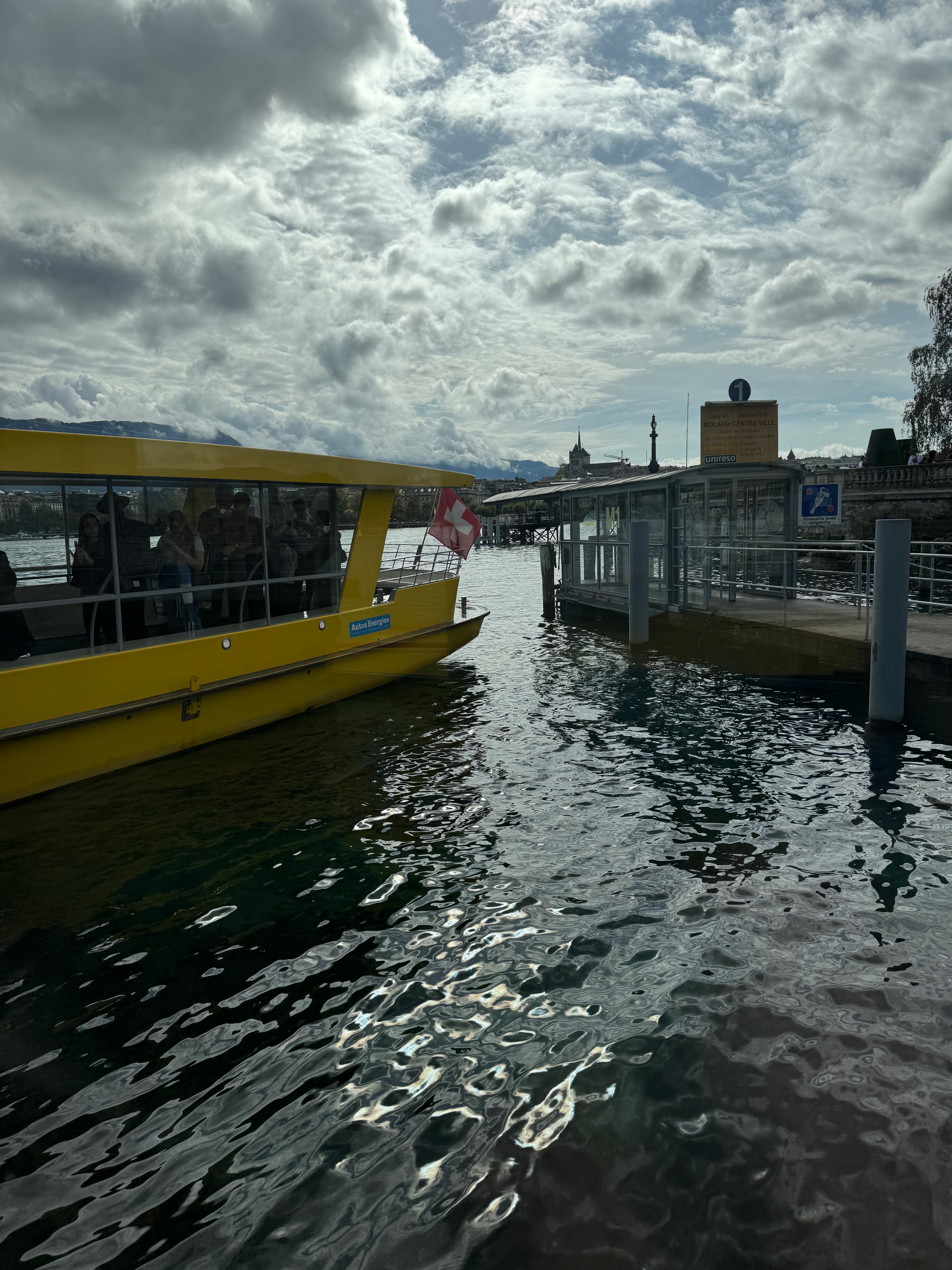
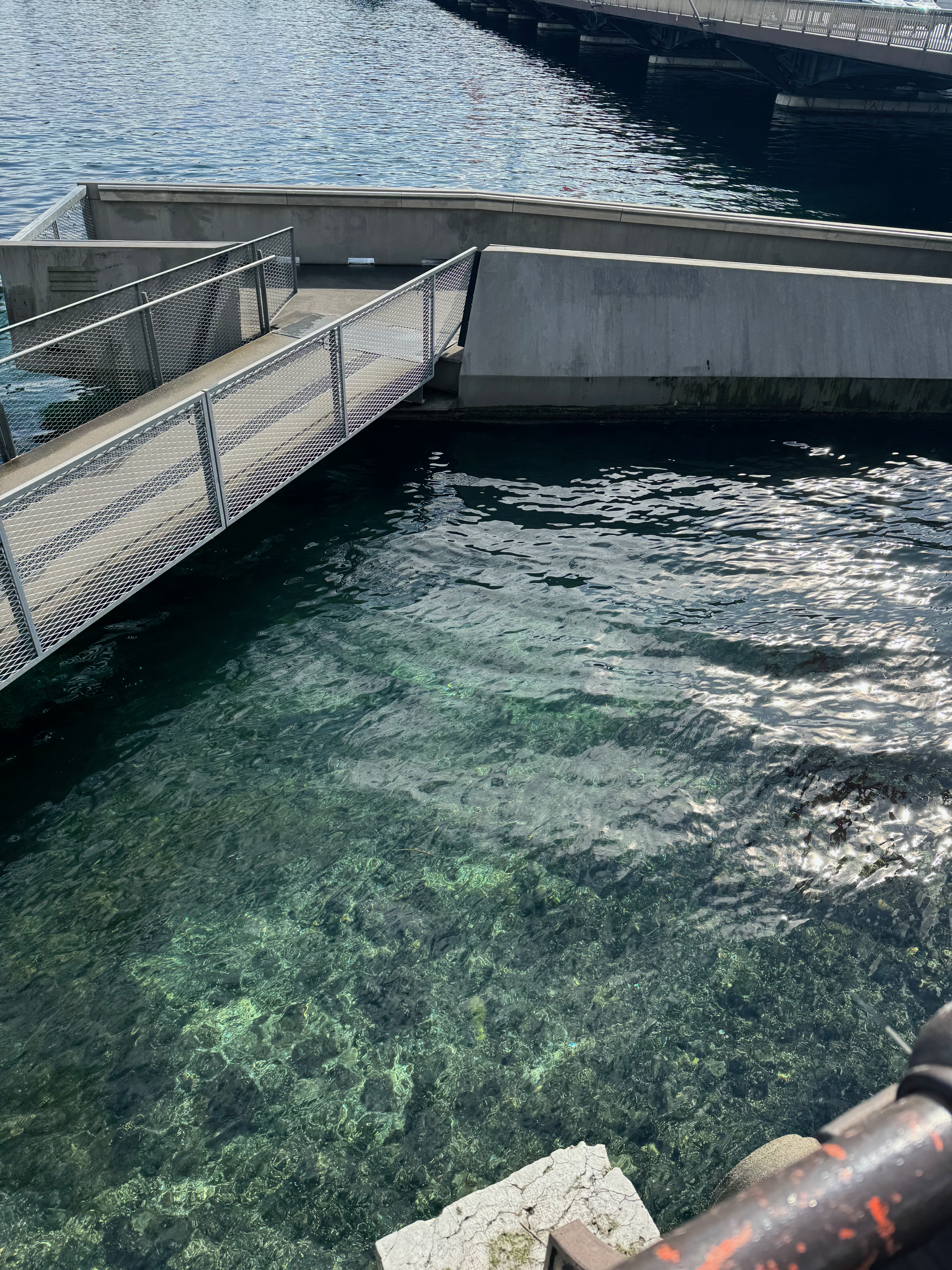

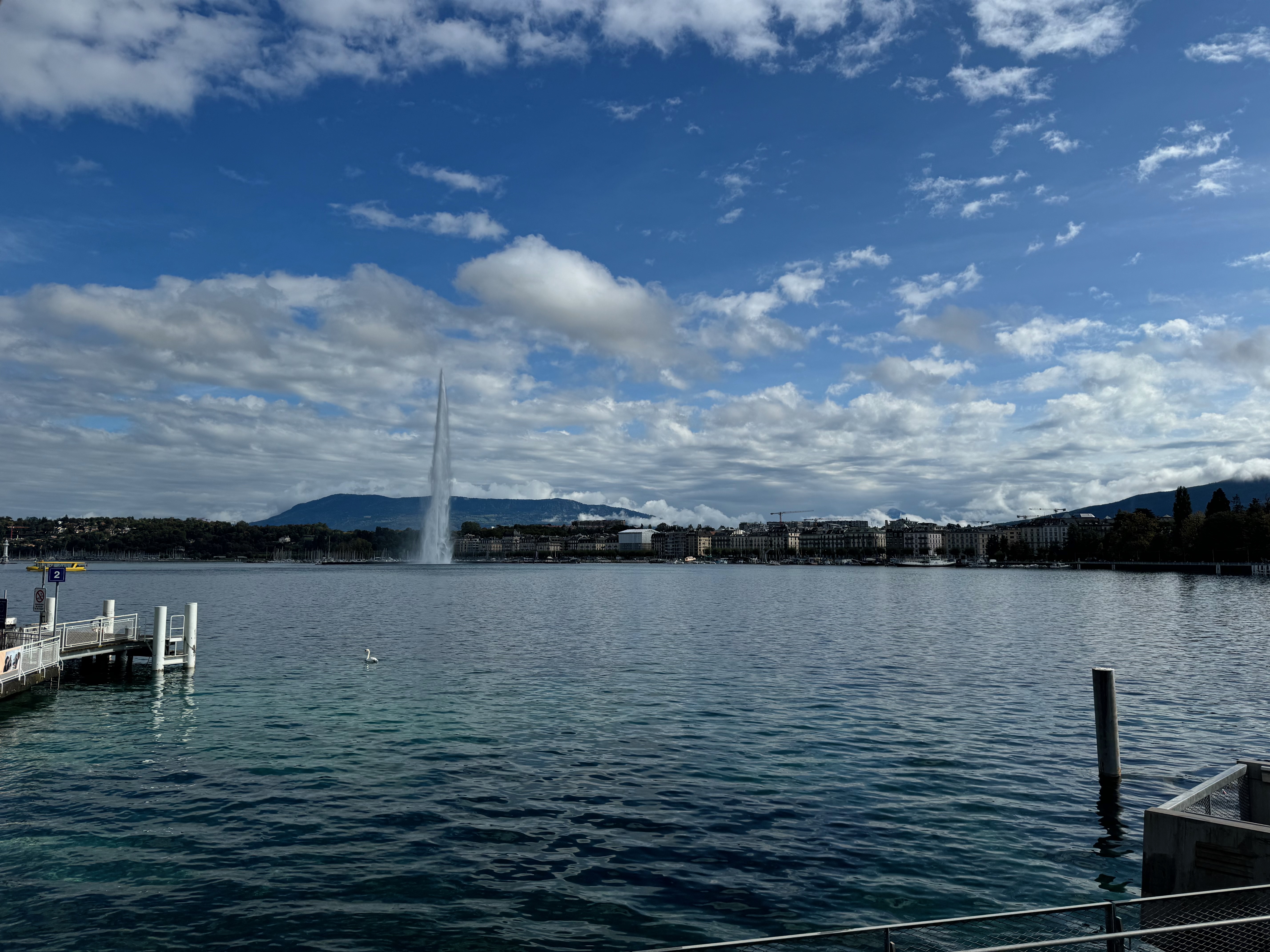
The Treille Bench is mooted to be the longest wooden bench in the world, at 120 metres. First constructed in 1767 and found behind the City Hall, this bench is located in a park with a view out to the western parts of Geneva. A good spot to have a rest and enjoy the view, whilst in the middle of exploring the Old Town!
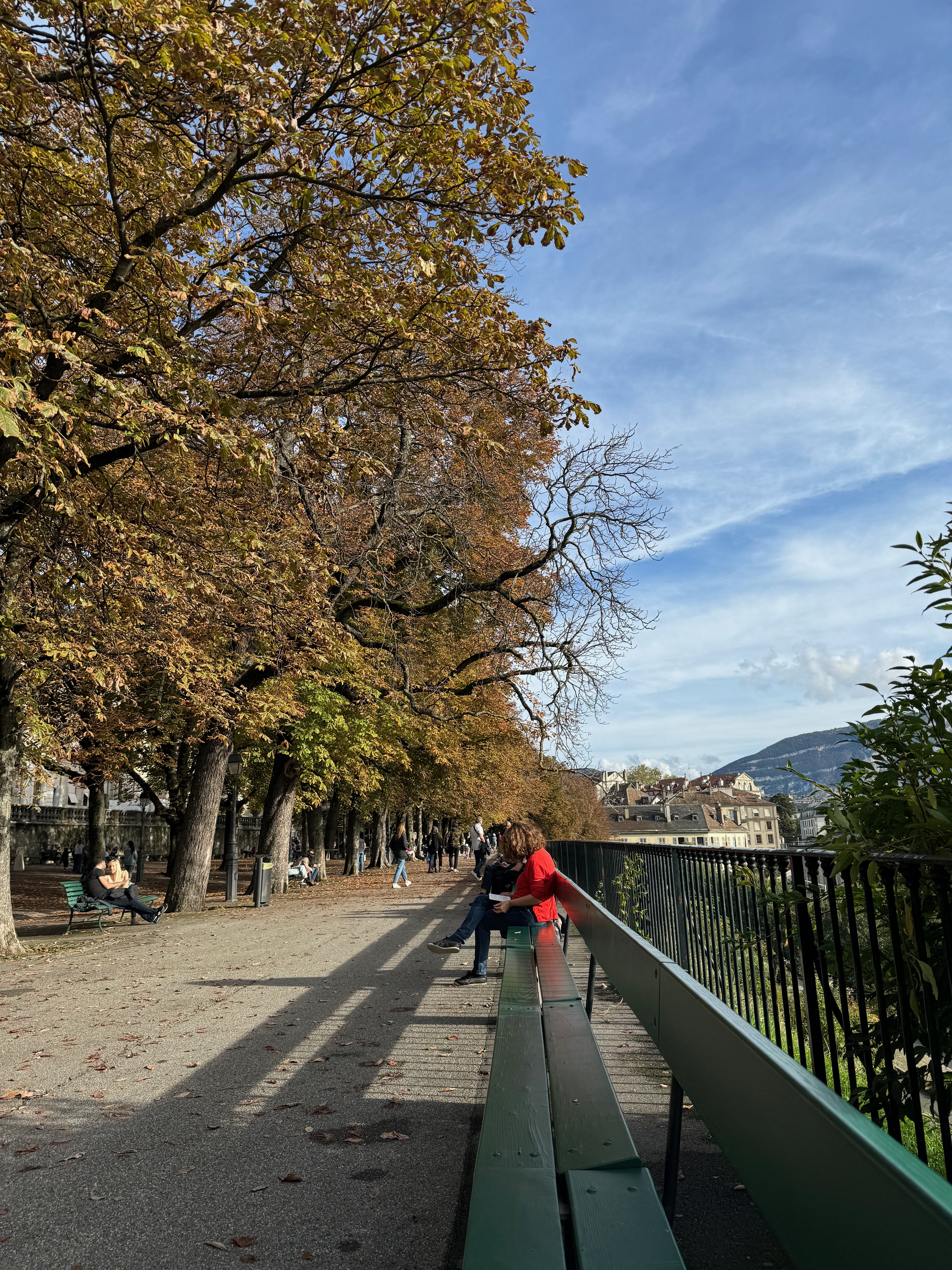
When in Switzerland, you have to visit one (or indeed more!) of the famous chocolate shops. Swiss chocolate is some of the most highly renowned for its quality, particularly when it comes to milk chocolate. Chocolate shops such as Auer and Faverger can be found across Geneva, particularly in the Old Town. There are also shops in the main station and airport, although prices here can be higher. Swiss chocolate can also be found in all major supermarkets, if you are looking for something a little cheaper (the Migros at the main station is a very good bet!).
If you are a big chocolate fan, you should look at Geneva’s Choco Pass. The pass costs 30 Swiss Francs (24 Francs with a Geneva City Pass) and entitles the holder to a tasting plate at a collection of Geneva’s chocolate shops. For more details, there is an information page on Geneva’s main tourist website here.
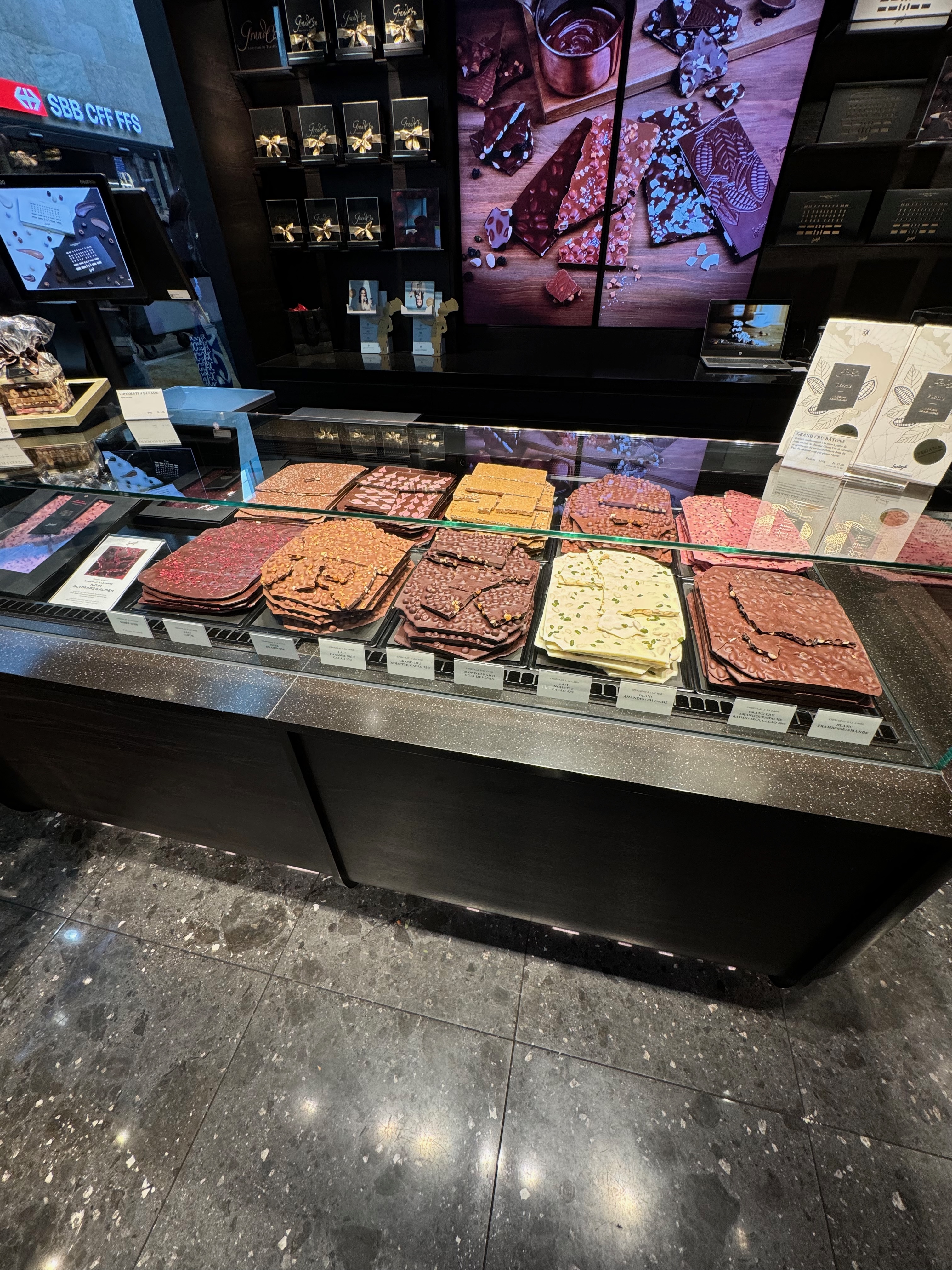
Between March and October, Geneva Airport has a rooftop viewpoint, cafe and small exhibition which is on the landside part of the airport. If you have some spare time at the airport waiting for connections or need something to do before going through security and customs, this is a good space to plane watch with a coffee, admiring the view of the Jura mountains! It can be found on the 4th floor, next to the arrivals area.
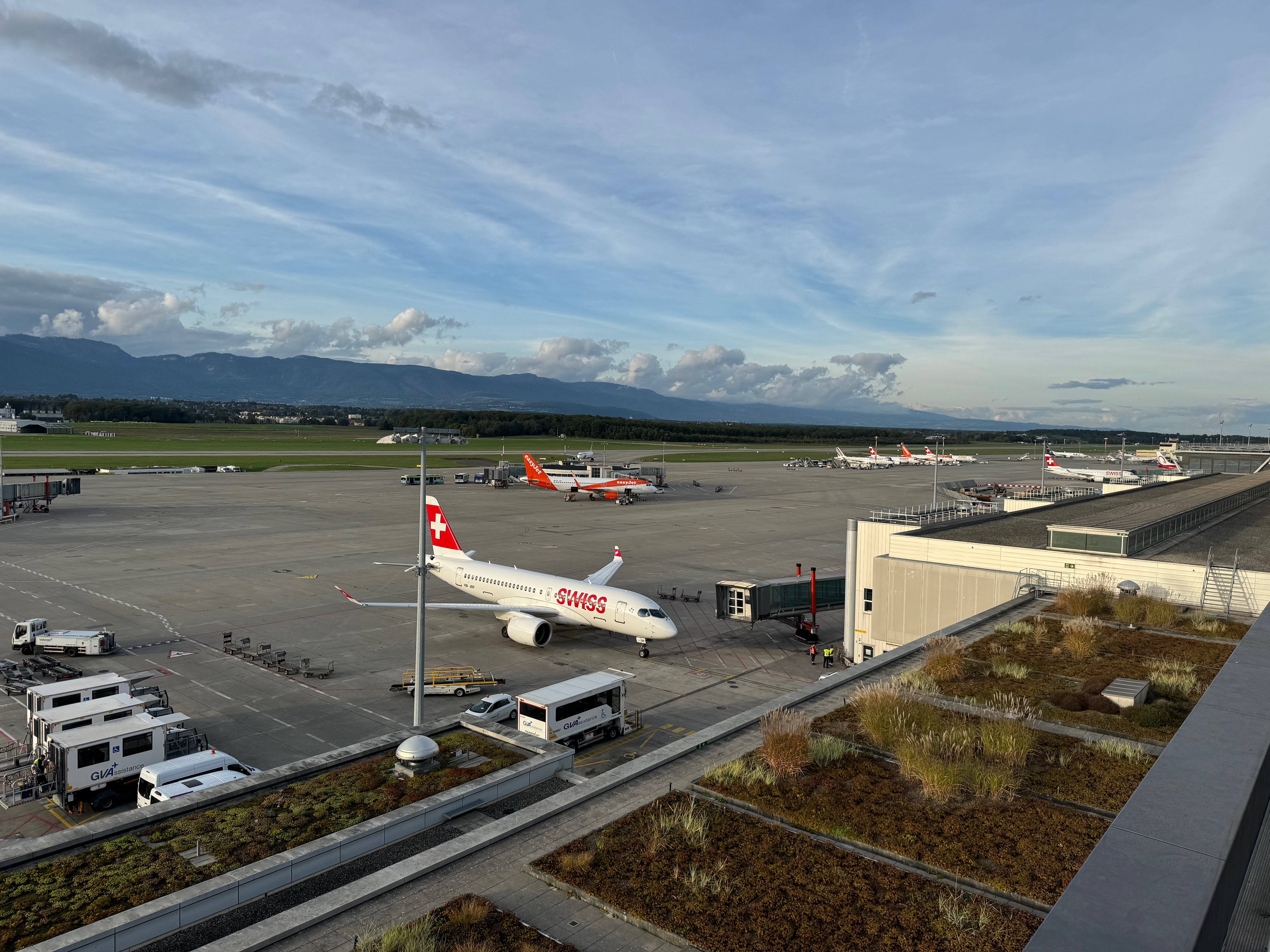
Where to eat
Geneva has many bakeries and sandwich spots to grab something for your lunch to eat in or to take out for a picnic by the lake. Prices are high, as with everything in Switzerland, but food is generally a good quality. A good bet is always to see where the queues are (with locals, not tourists) and follow those! The photo below is of Aimé Pouly in the Eaux-Vives district, which seemed a popular bet with the locals!

For the more discerning eater, Holy Cow is a burger chain found in Geneva with good quality food at a reasonably affordable price (as Switzerland goes). There is a restaurant opposite the main station which had quick service and well cooked food.
Switzerland is very hard to do on a budget but local supermarkets often have a good range of hot food and bakery items at a reasonably affordable price. Both Coop and Migros have branches across Geneva, with large stores in the main station. The Migros bakery was very popular around breakfast time!
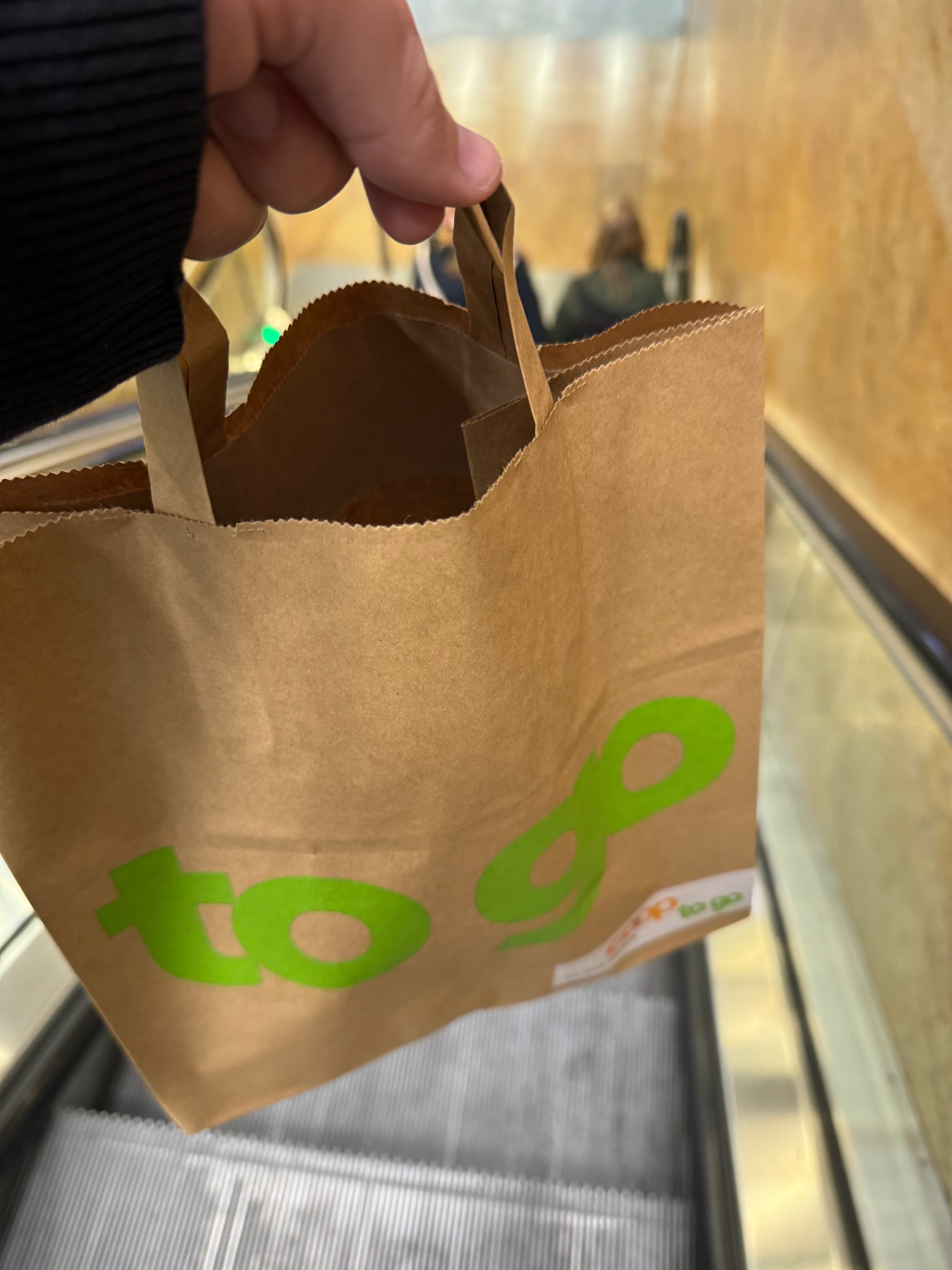
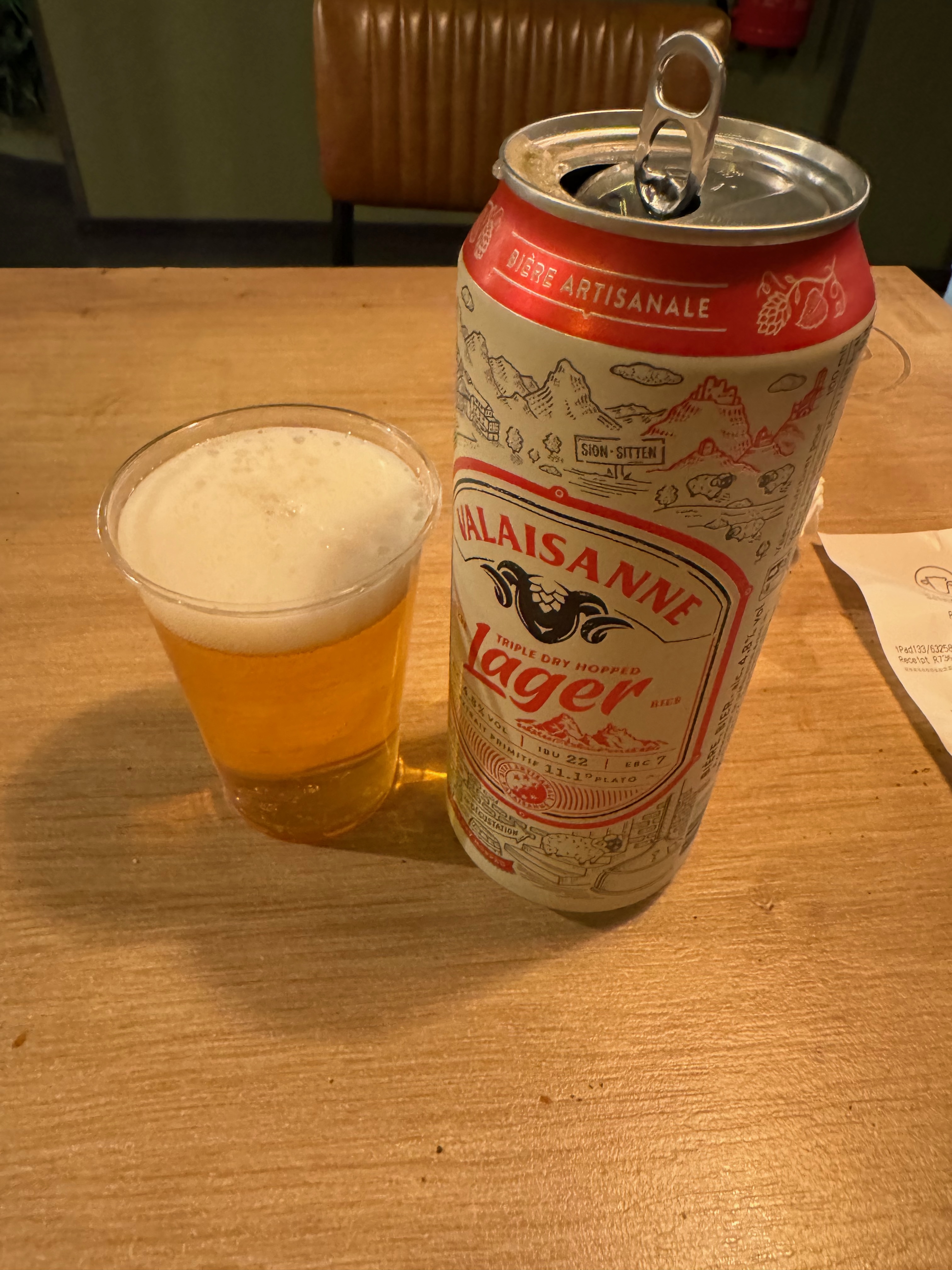
Where to stay
I chose to stay at the Warwick Geneva, using an offer that I got through booking.com. The hotel was located right next to Geneva Station – the photo below was the view from my window – which made it easy to get to attractions across the city or to stop by for a break in between activities. I chose not to go for the hotel breakfast, as that was very expensive, and instead visited the supermarket inside Geneva Station to get some food.
I also looked at hotels from Ibis, InterCityHotel and CitizenM, as part of my considerations for this trip.
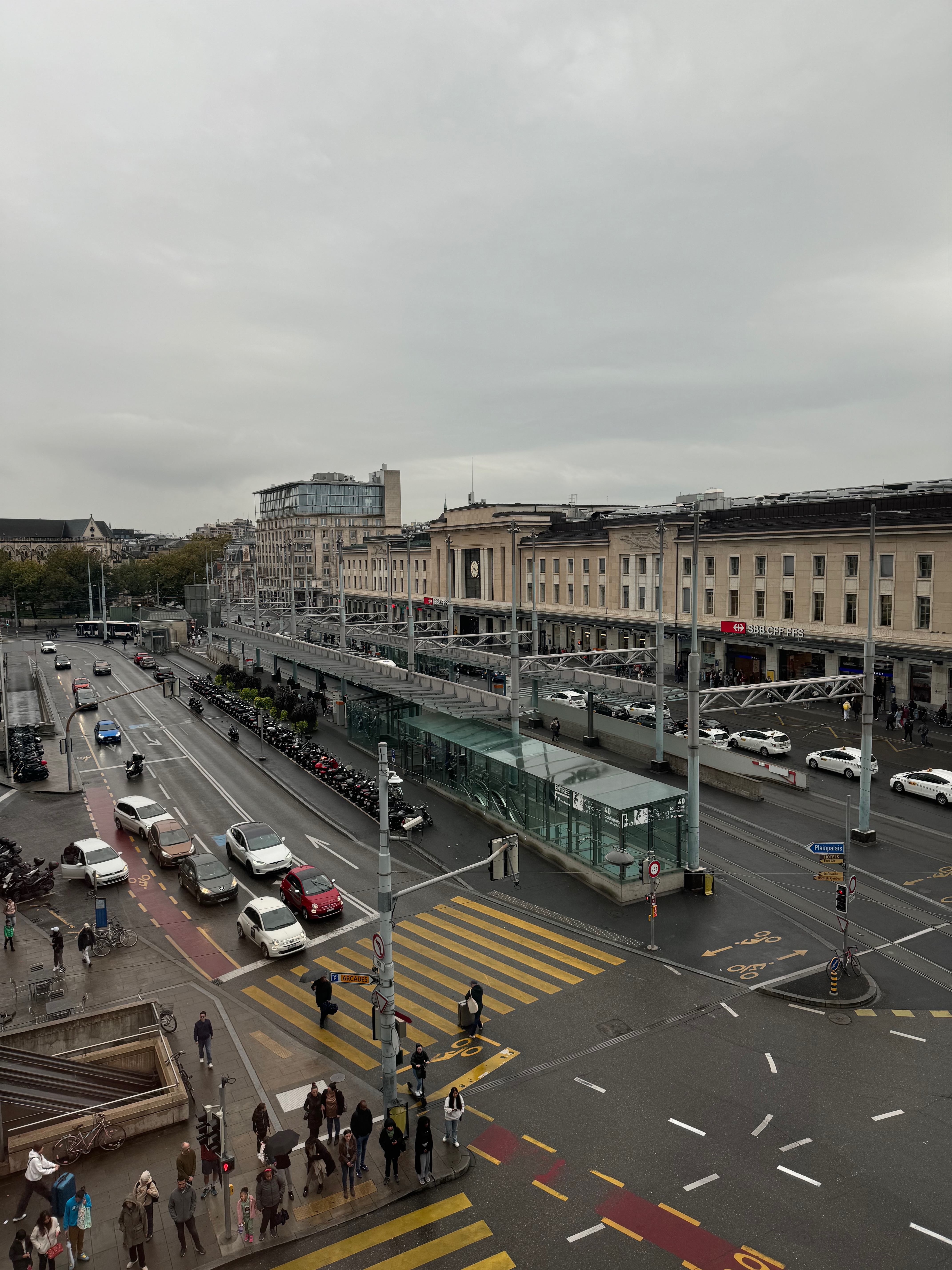
The budget
BA, EasyJet and Swiss fly from London to Geneva on a regular basis, with seasonal flights during ski season operated by various airlines. Given the presence of various international organisations in Geneva, flights are available from across the UK, continental Europe and wider afield. Prices do vary throughout the year and tend to be cheaper outside of ski season. I paid £110 for a return journey with Swiss from Heathrow at very short notice. Fares can be as low as £40 return with airlines such as Easyjet if you look in advance, whilst fares with Swiss are consistently around £110-130 outside of popular events. There were only 10 people on my flight!
I paid £120 for a one night stay in the Warwick Geneva, which also included a two day travel pass for the city. As is the trend with Switzerland, hotel prices are higher than the European average. Expect to pay at least £100 a night for a good quality hotel, potentially as high as £200 a night during peak season. If you shop around, you can normally find a good deal. In addition to the usual comparison websites, sometimes it is good to look on the website of non-chain hotels directly as they can offer 10-15% discounts for booking with them. Also bear in mind that you hotel will come with a public transport card so there is some ‘saving’ to be made!
As with most European cities, Geneva has a City Pass on offer – prices start at 24, 32 and 40 Swiss Francs for 24, 48 and 72 hours (if bought online). The pass doesn’t include public transport, unless you pay a separate fee, since you may have it included with your hotel. I chose not to get the card but it may be useful to you if you want to do a lot of attractions over your stay! Details on the card and wider tourist attractions across the city can be found here.
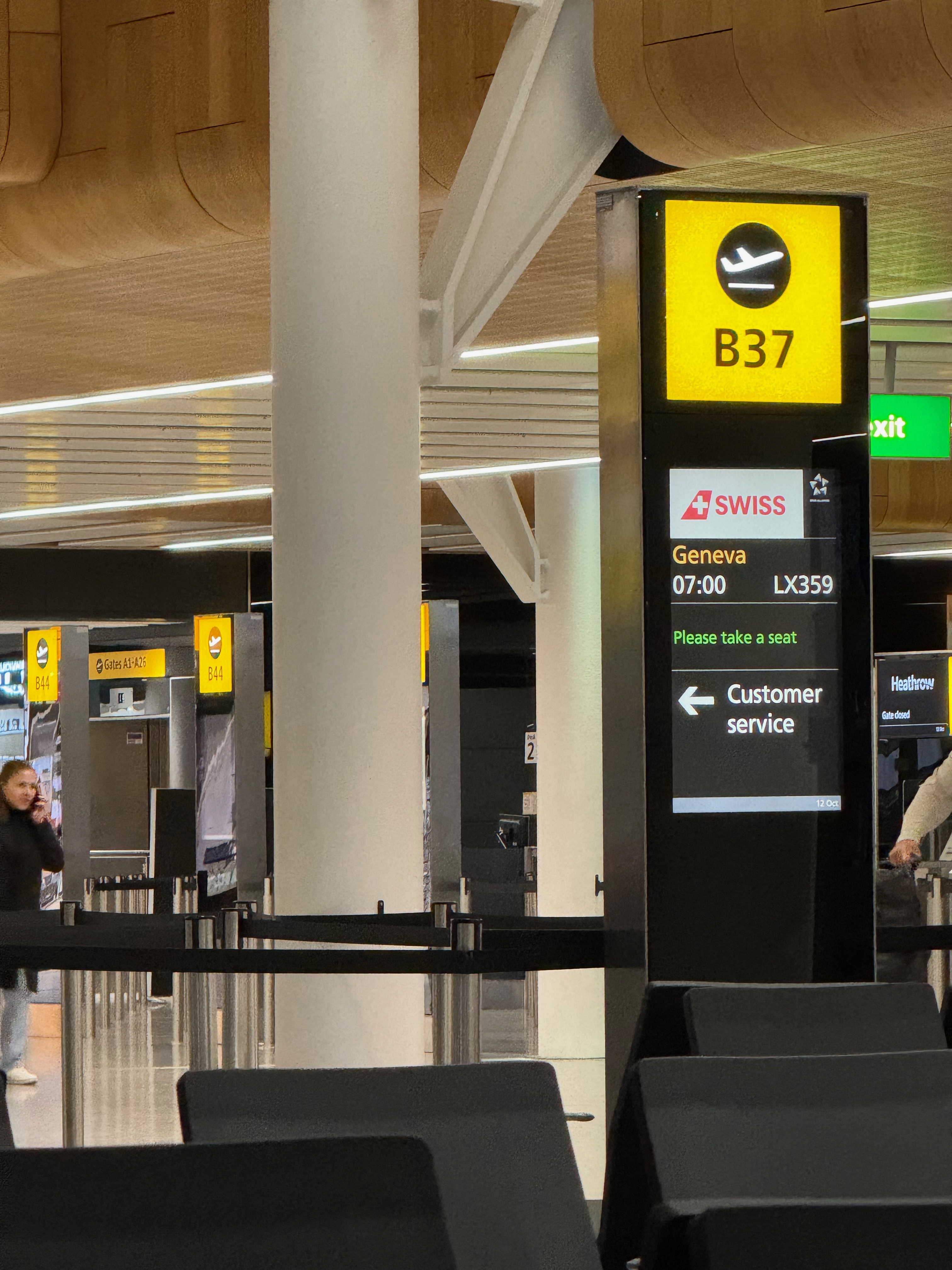
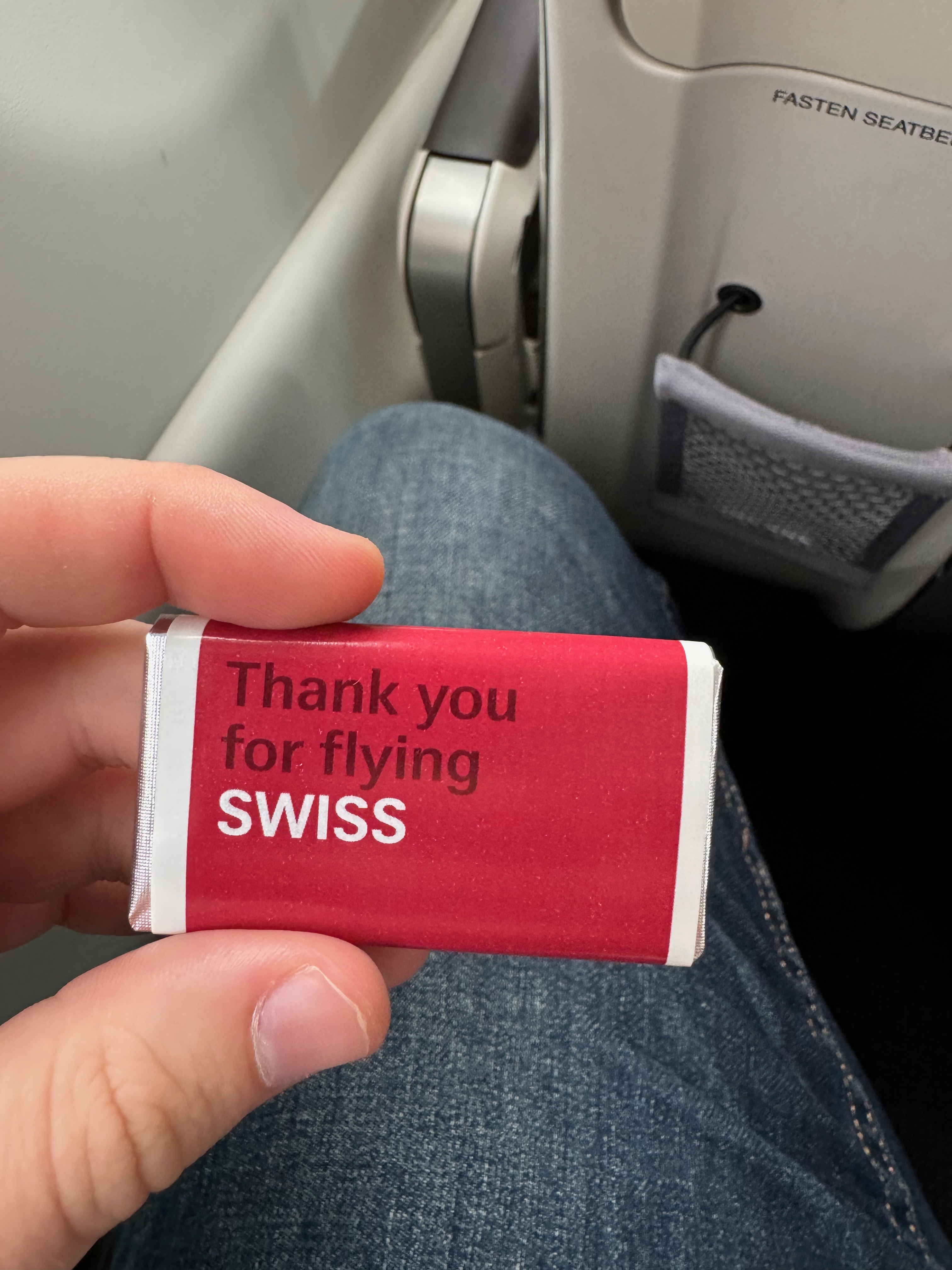
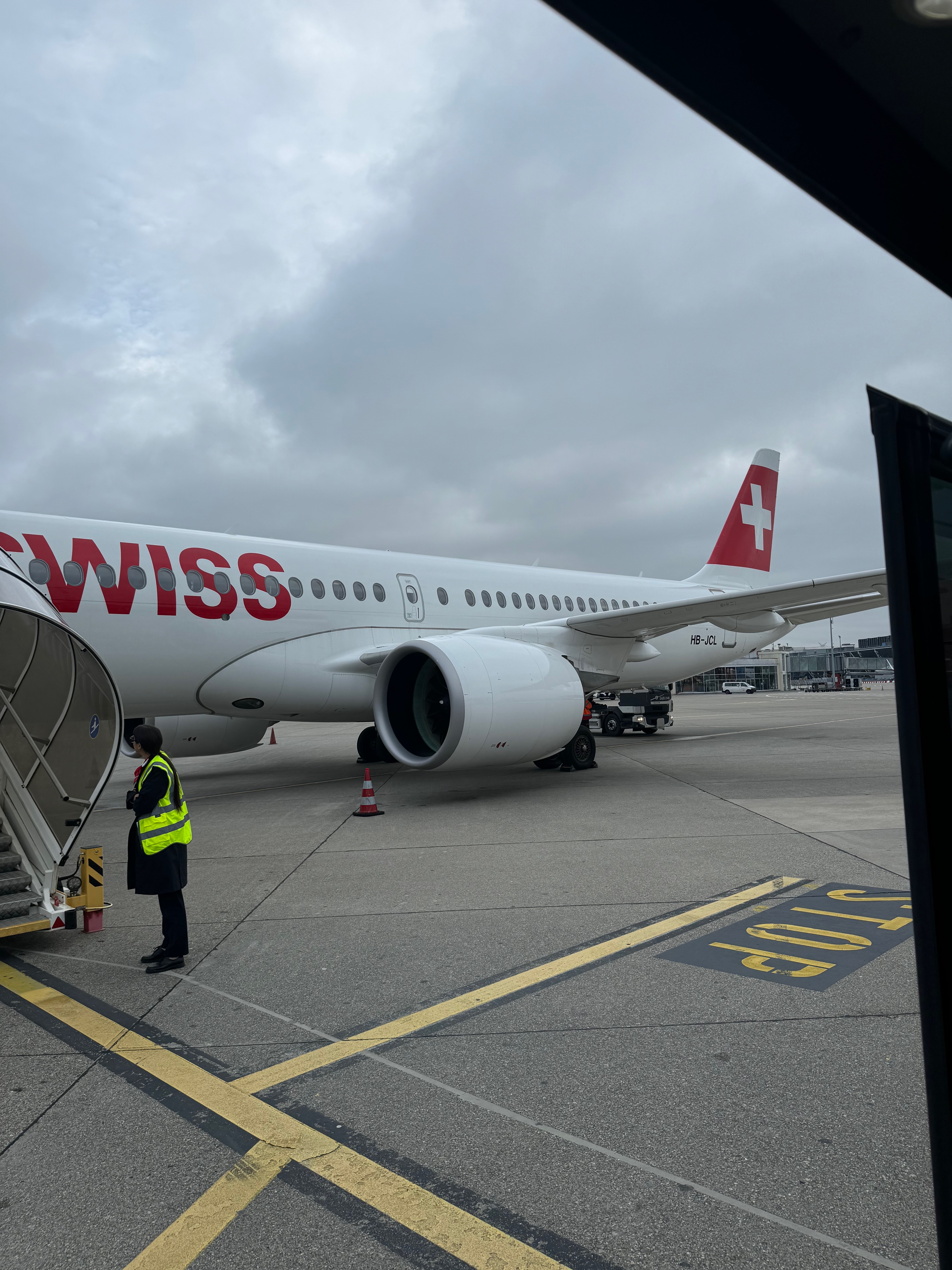
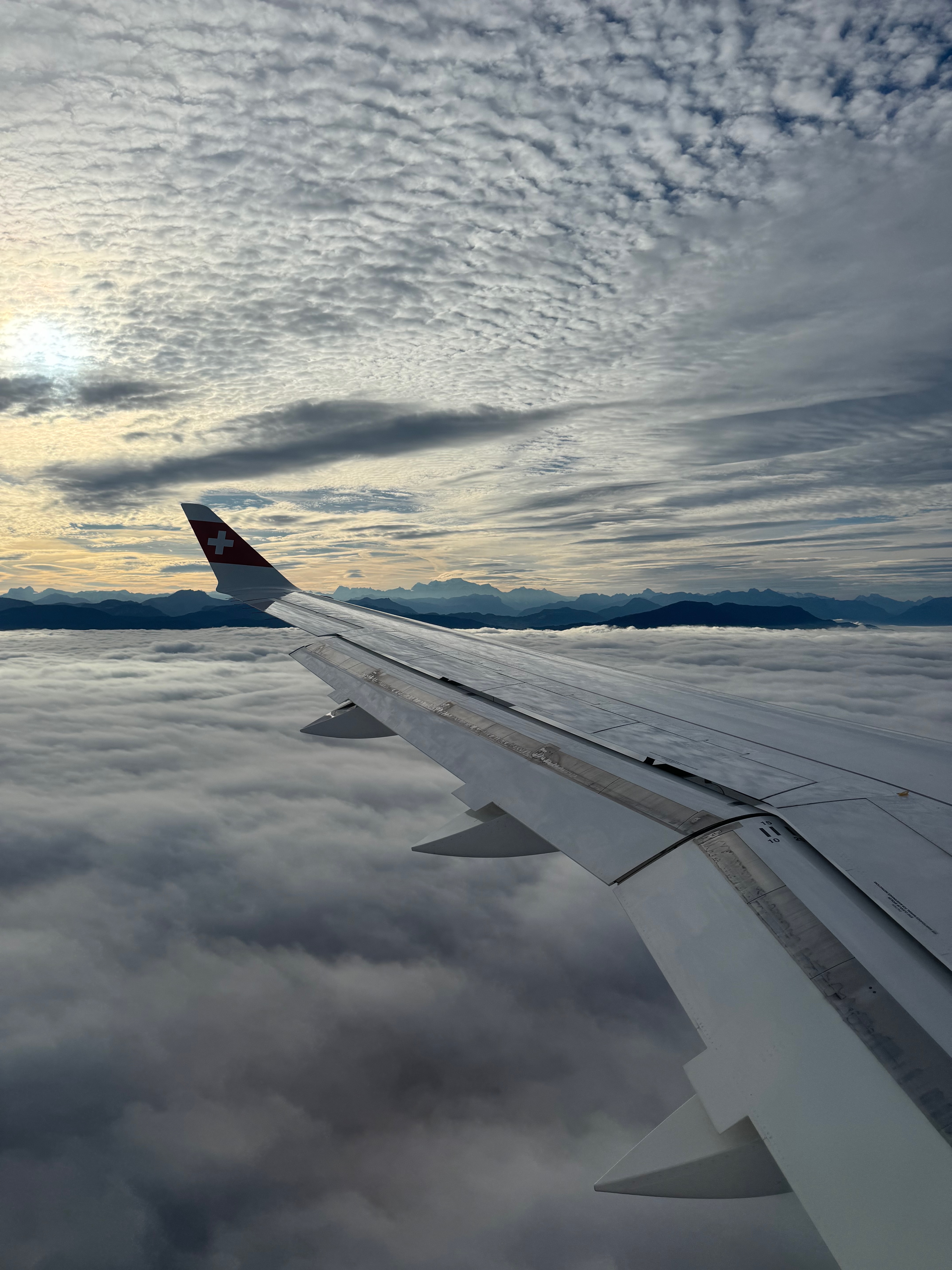
This post contains affiliate links to trusted partners. If you purchase through these links, I earn a commission at no extra cost to you. Thank you!
